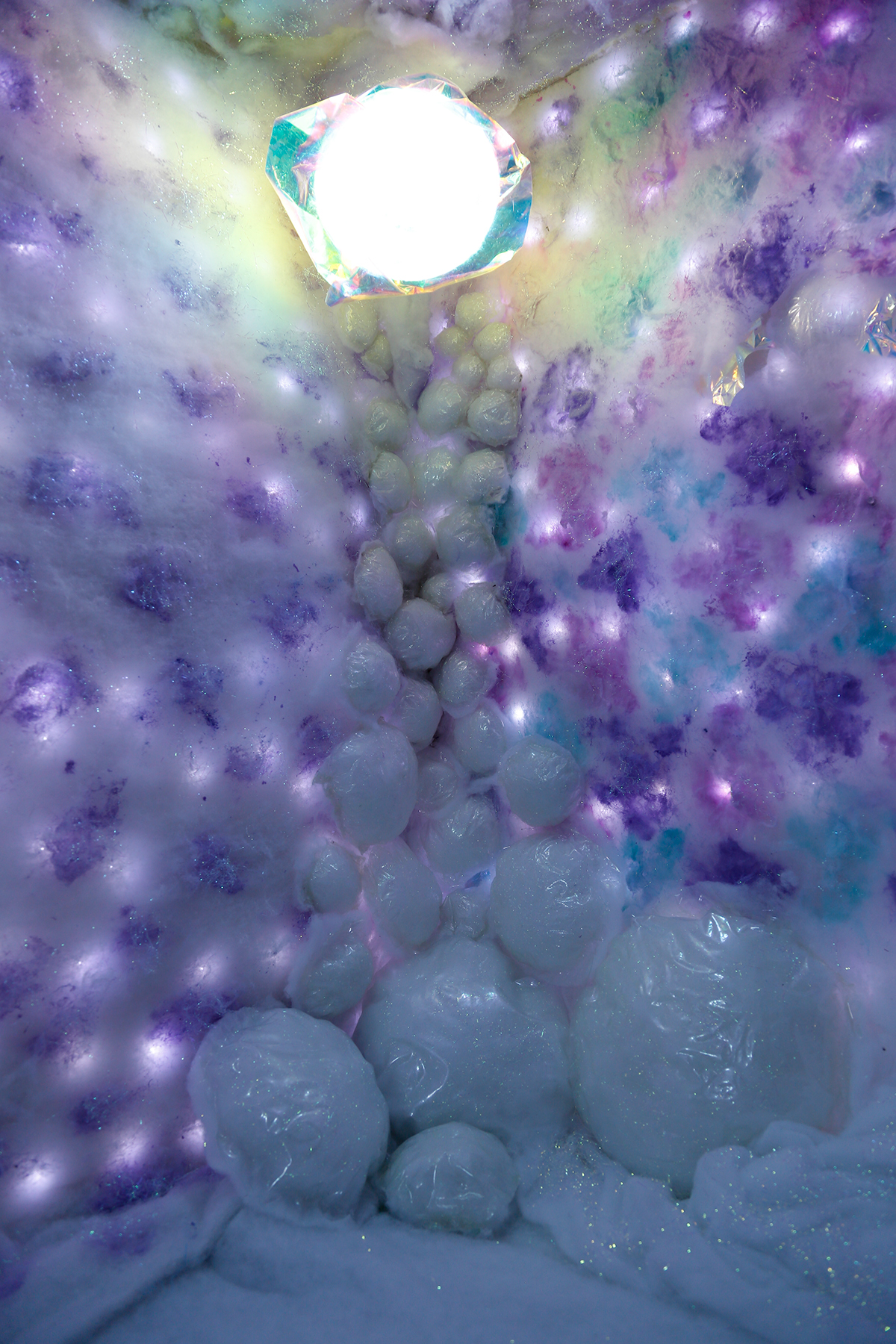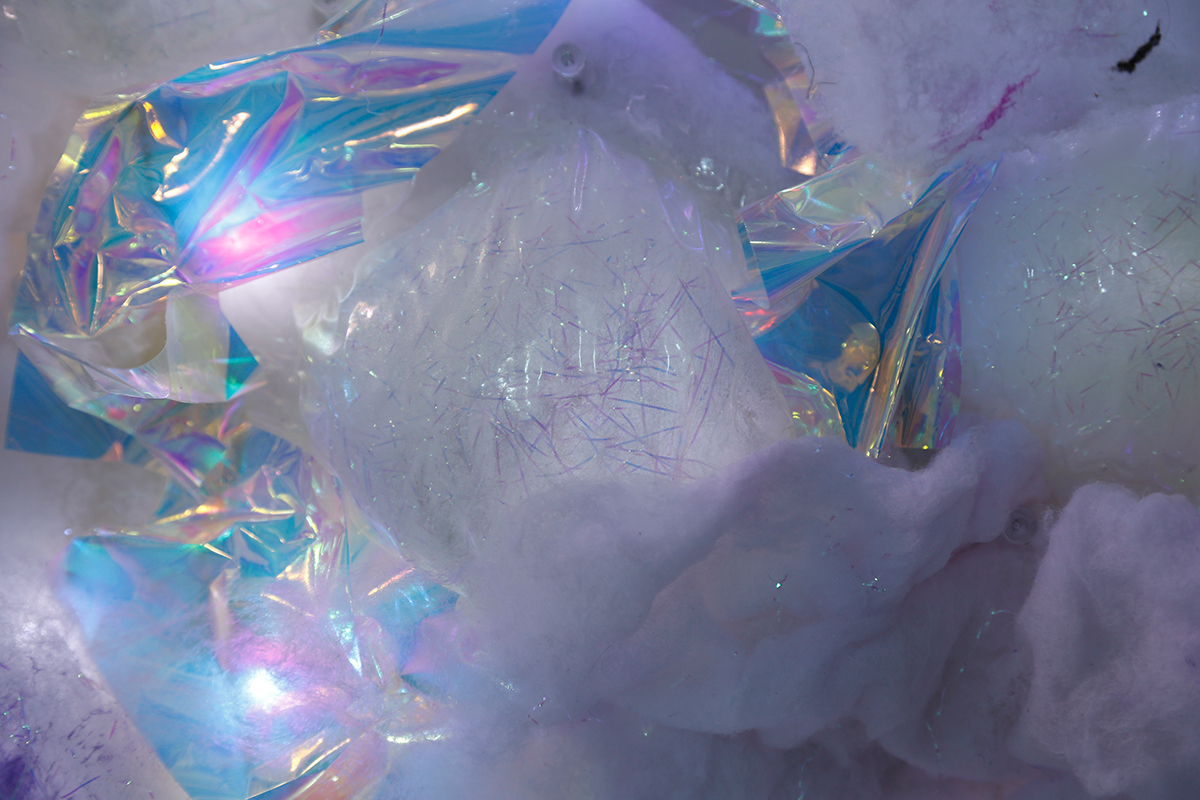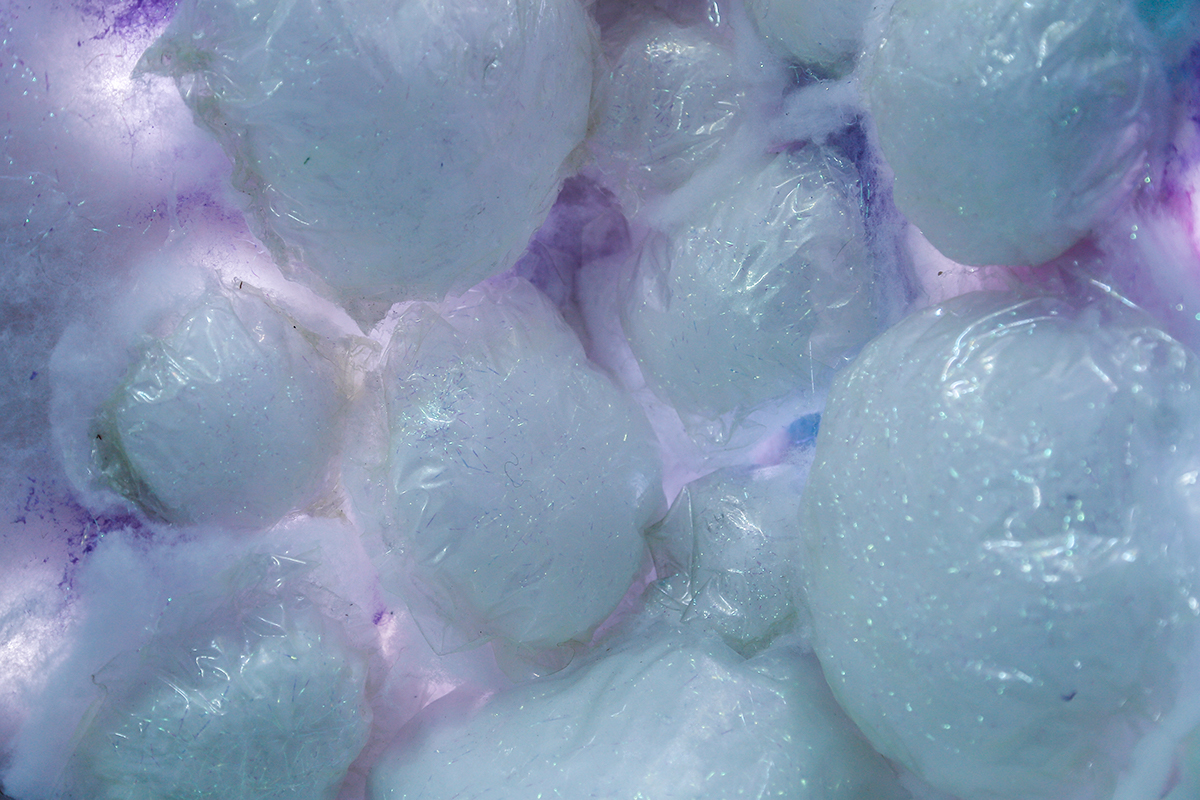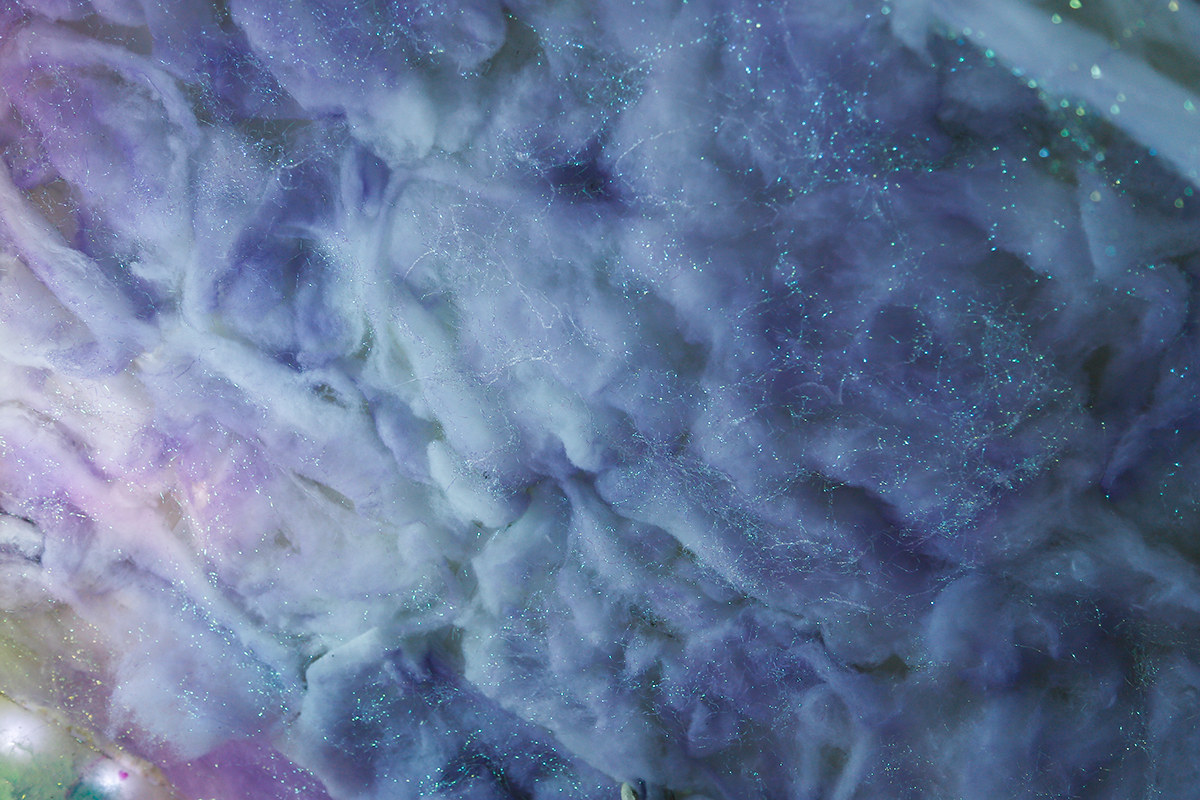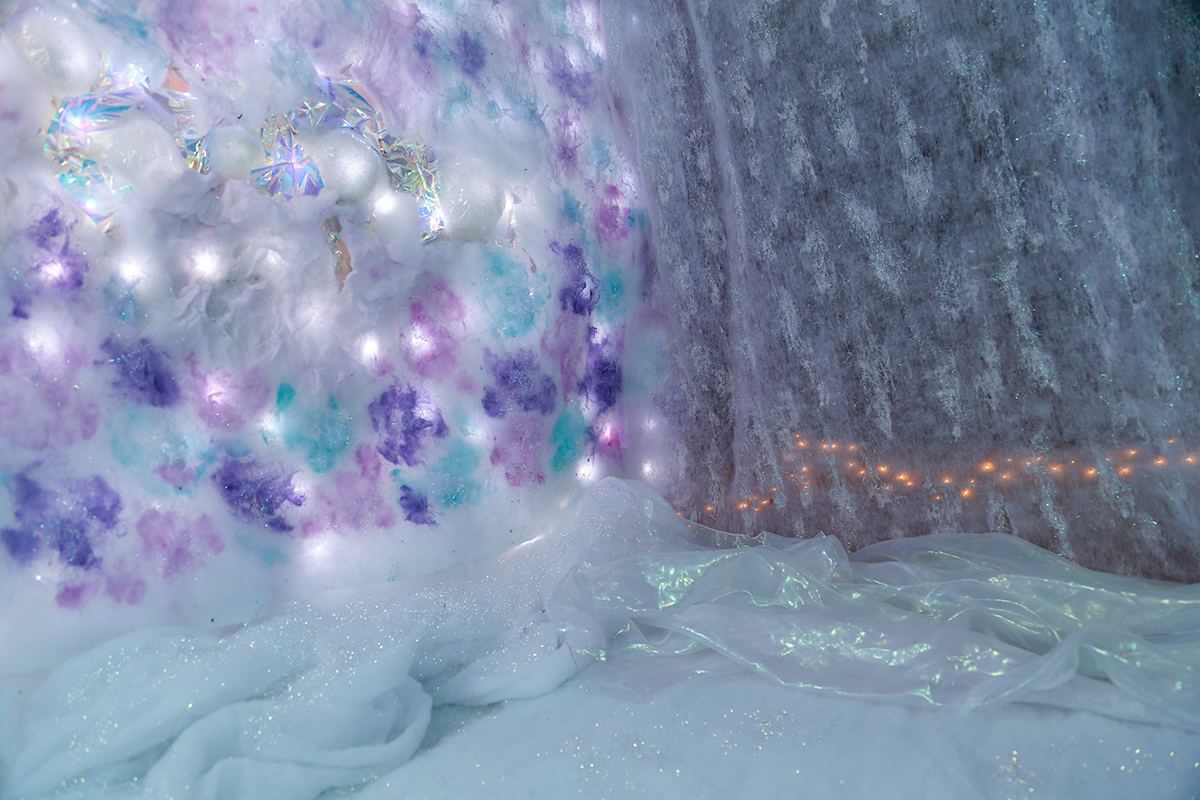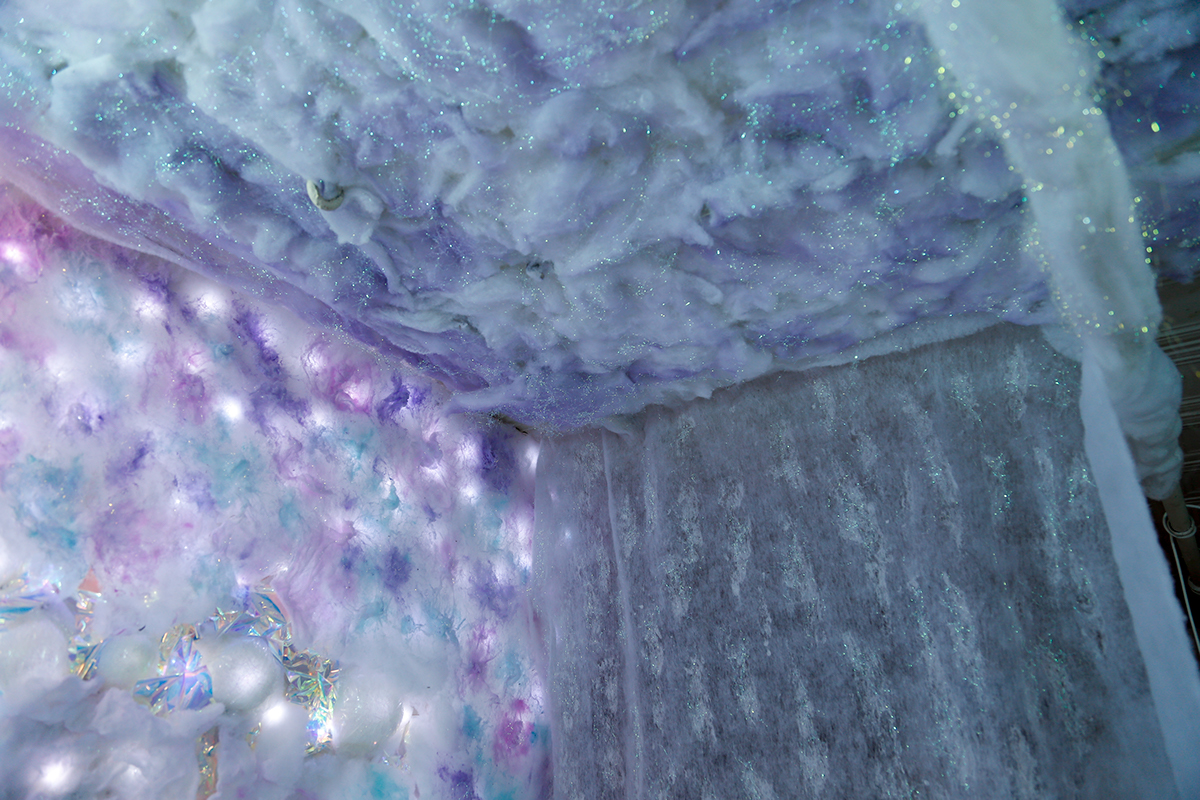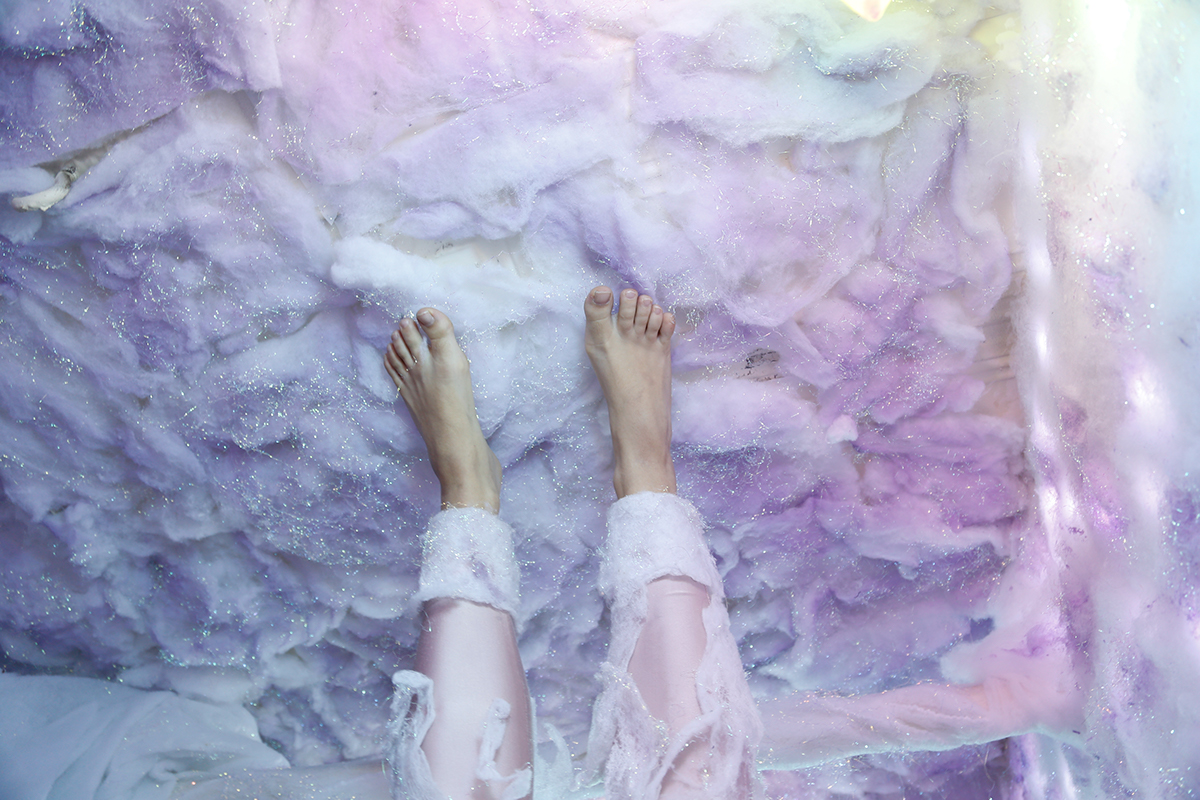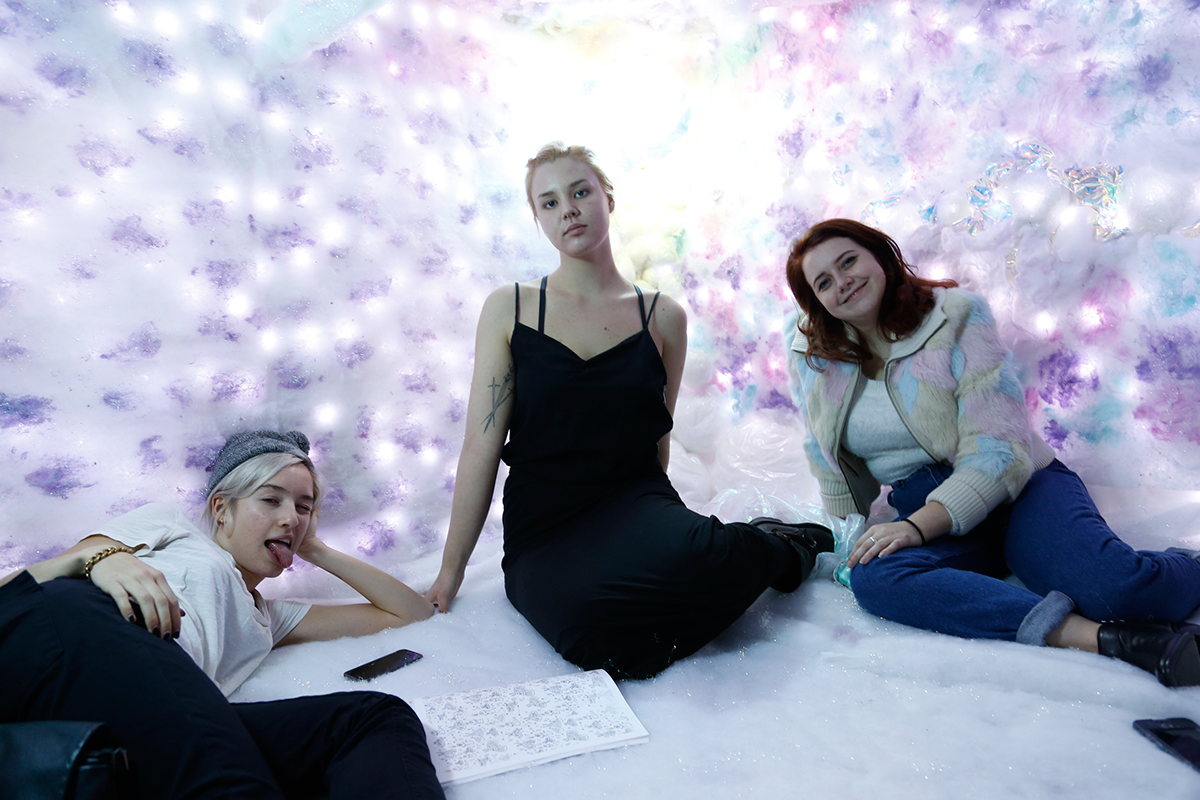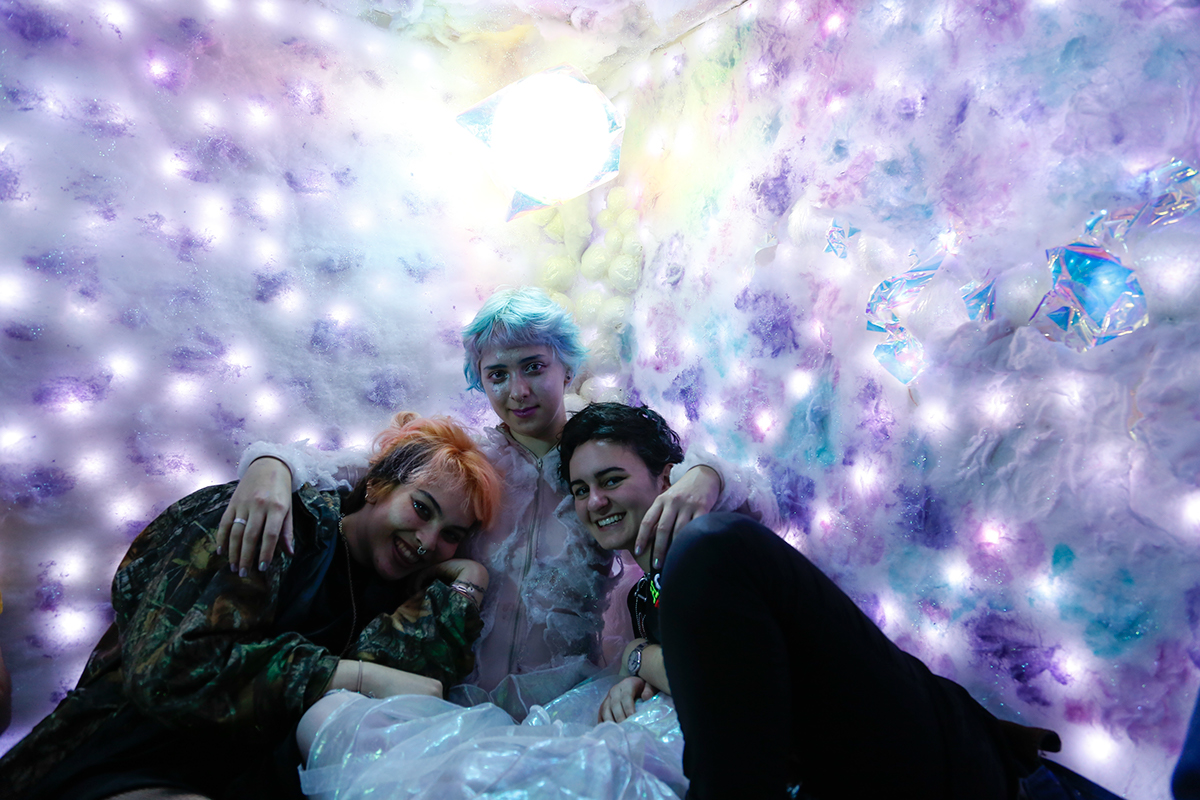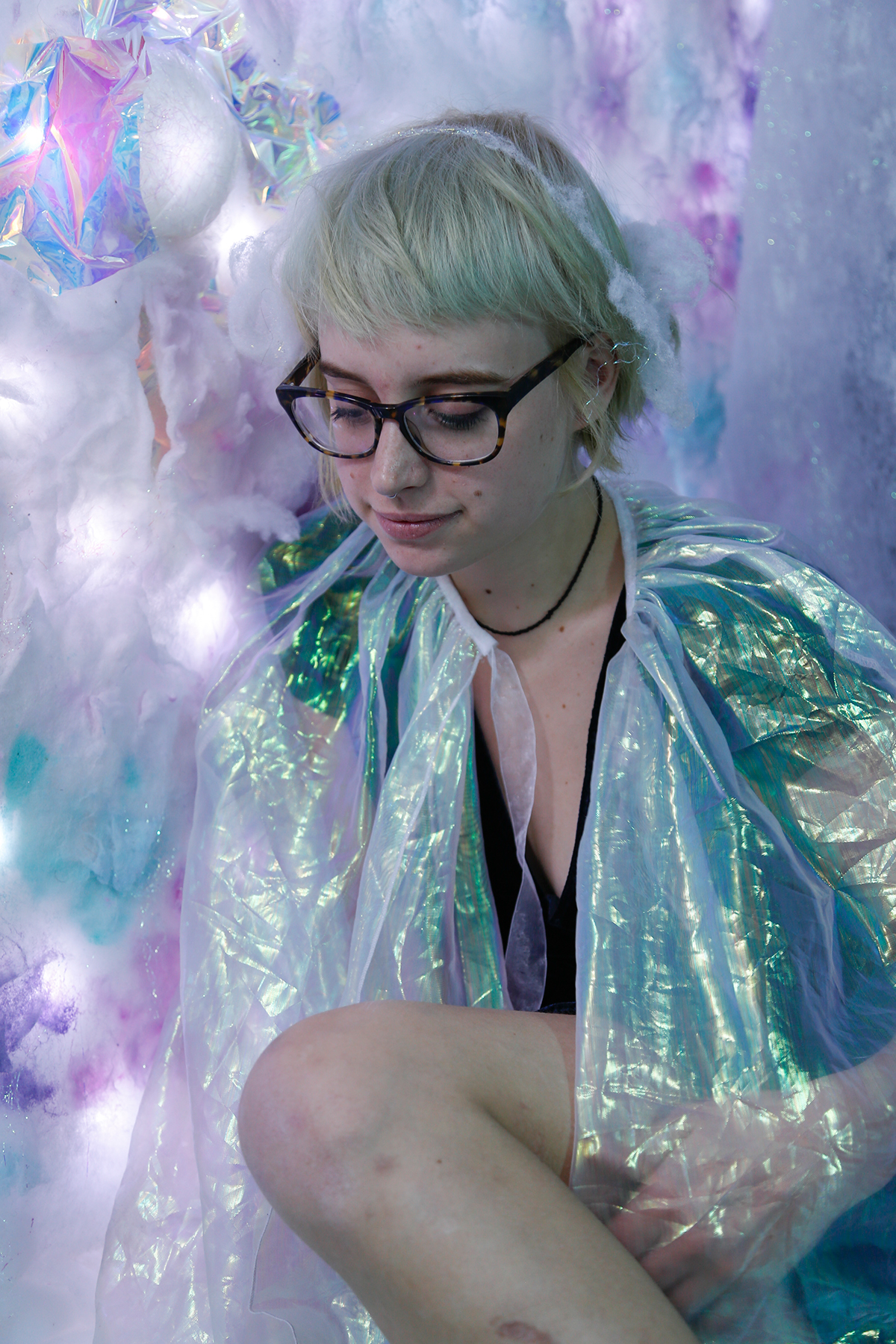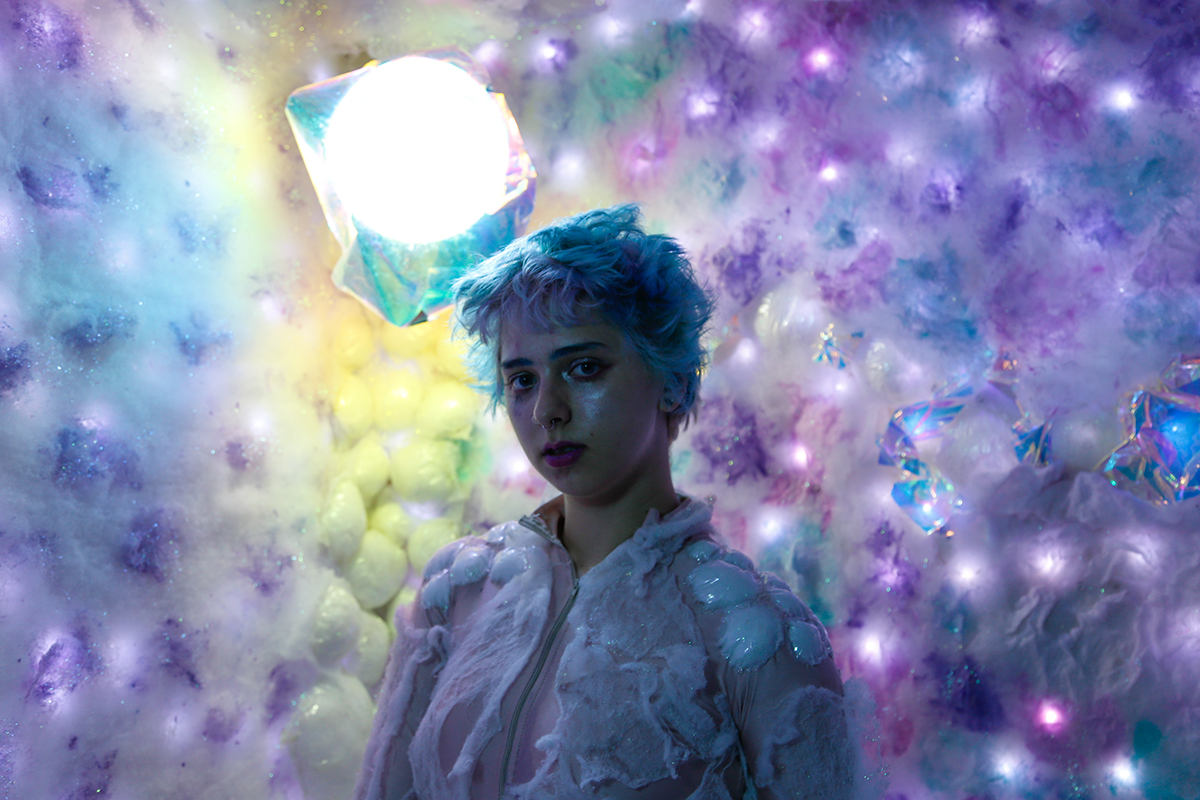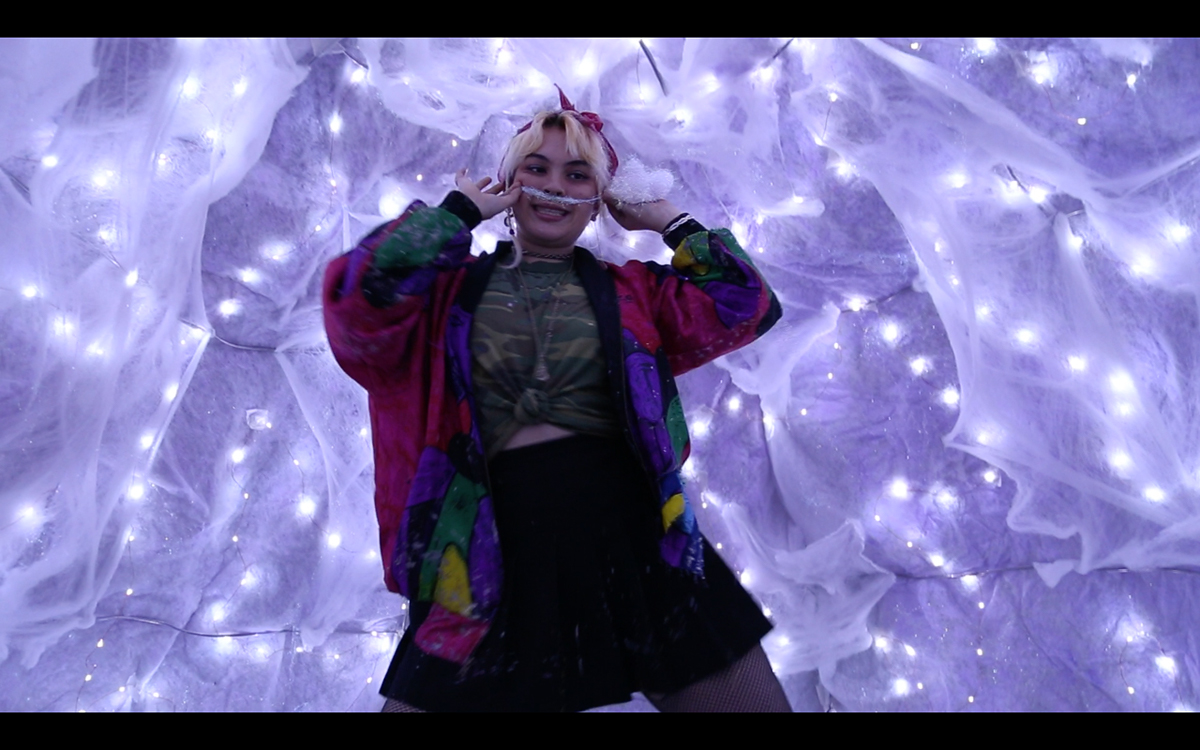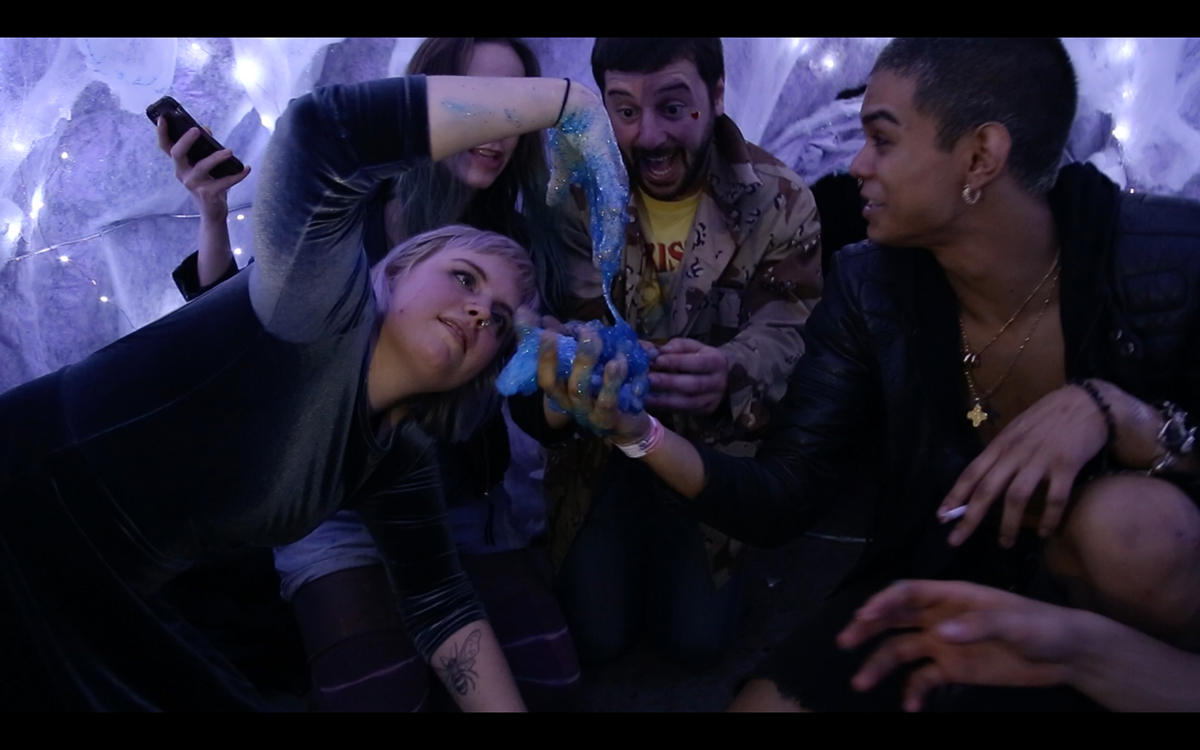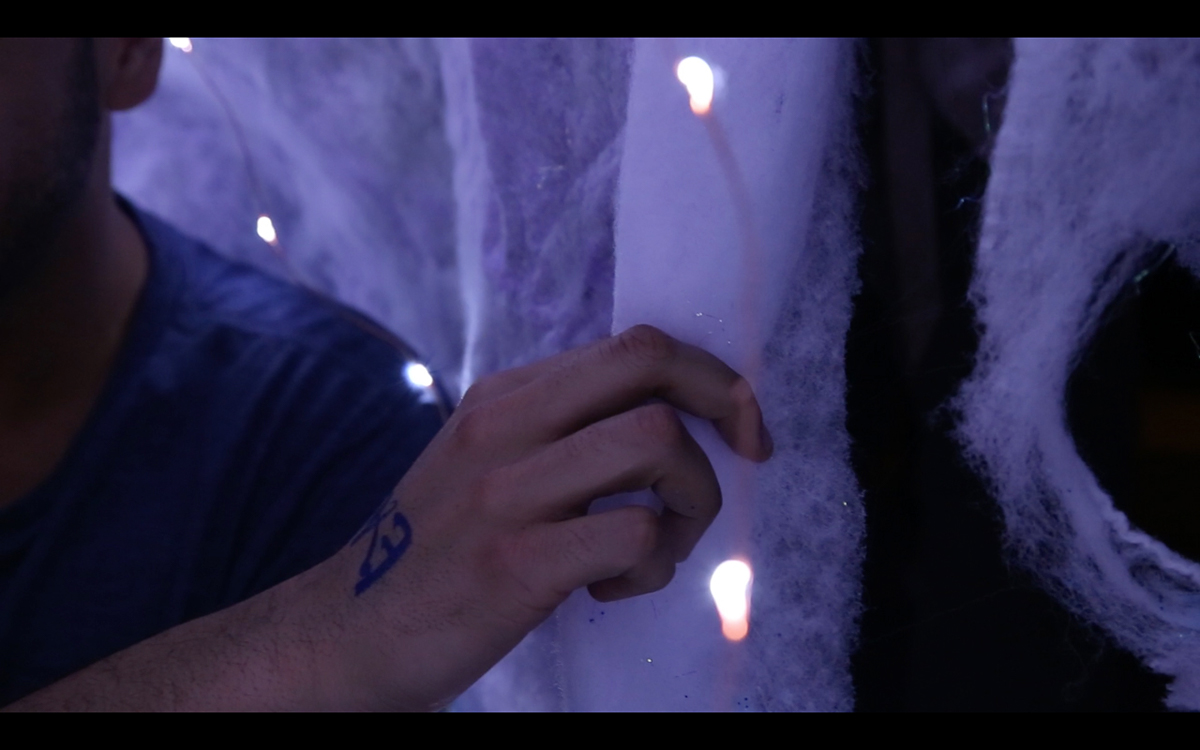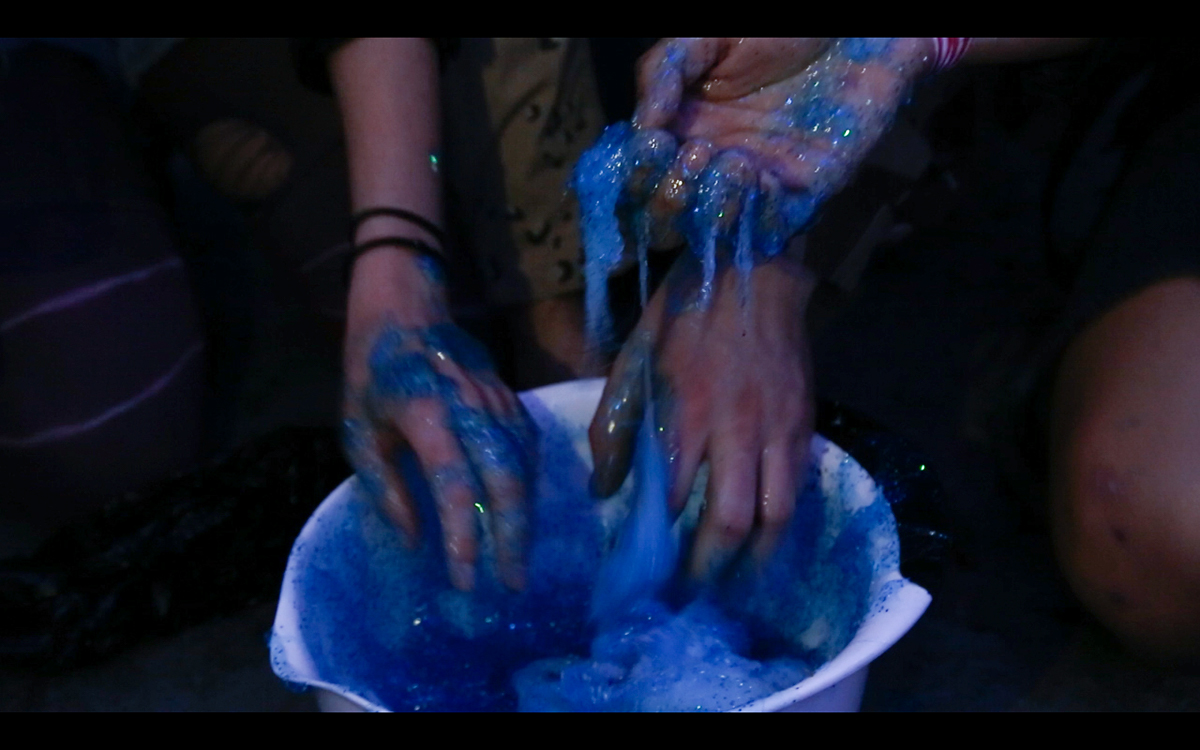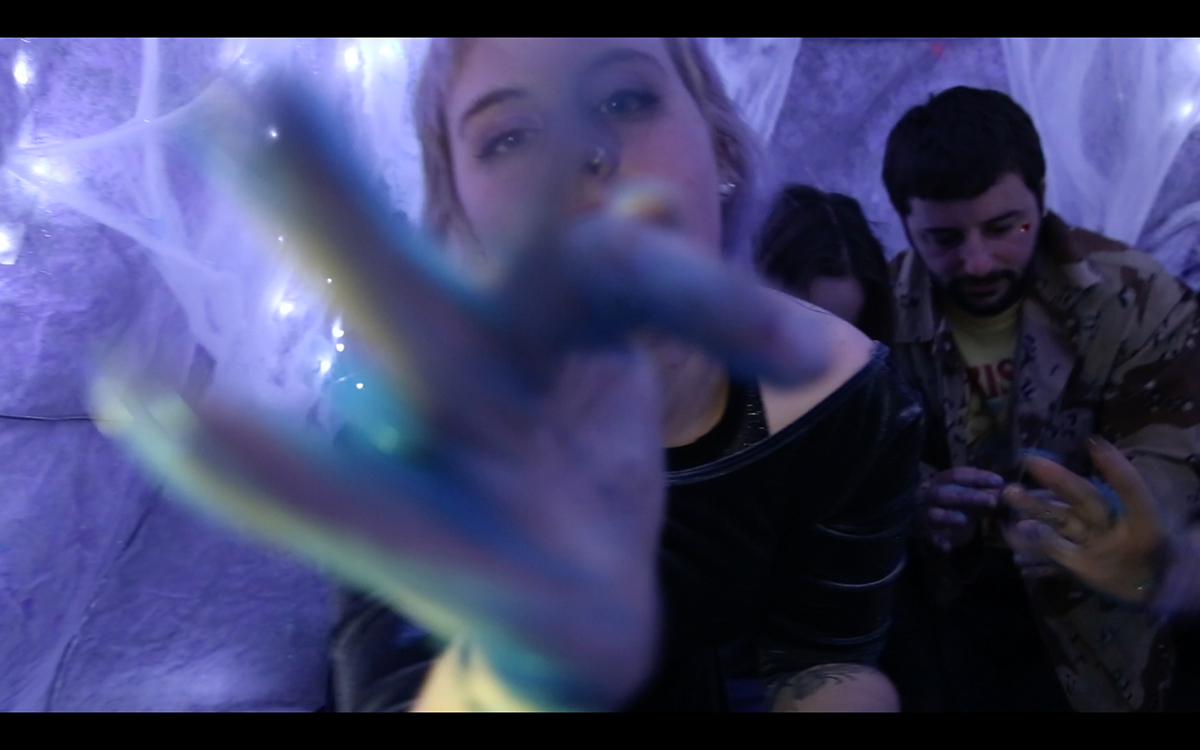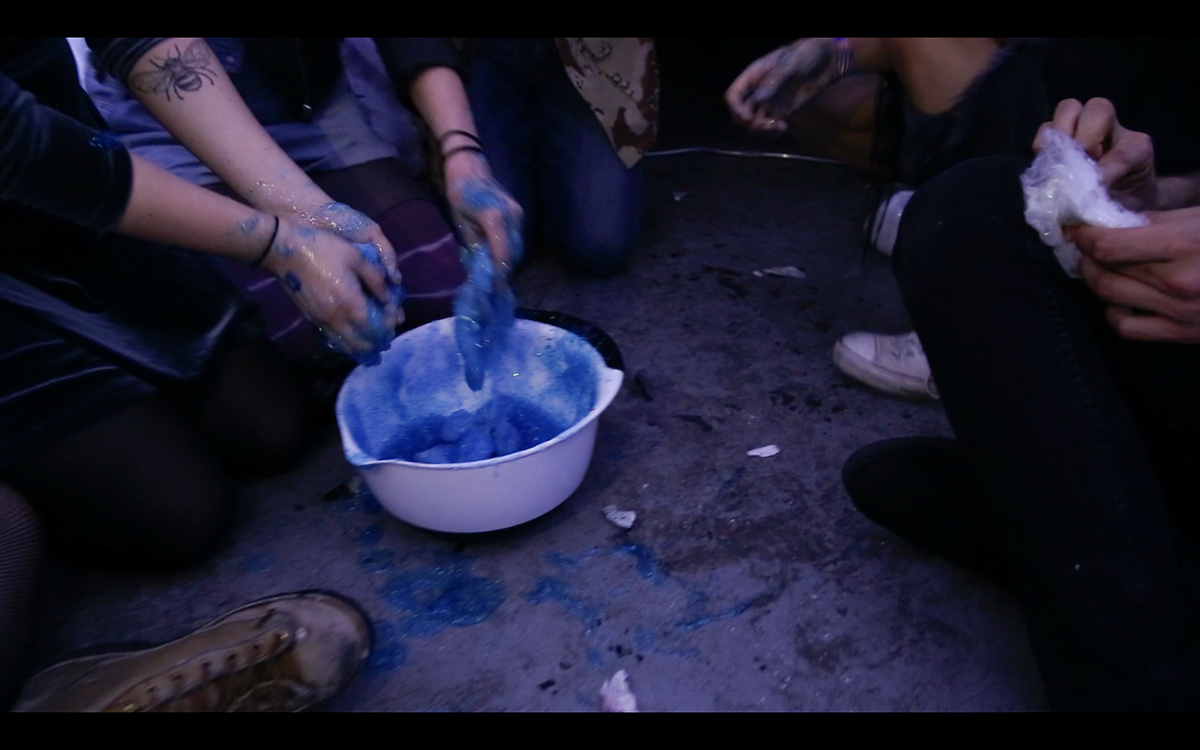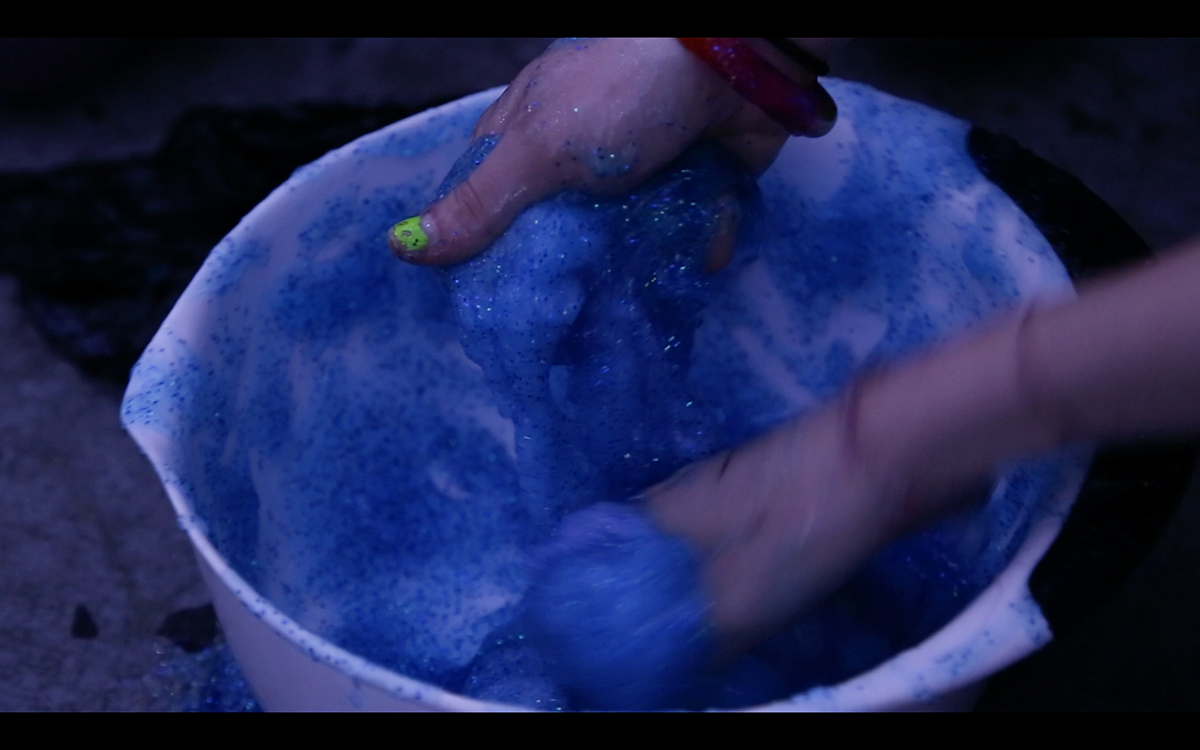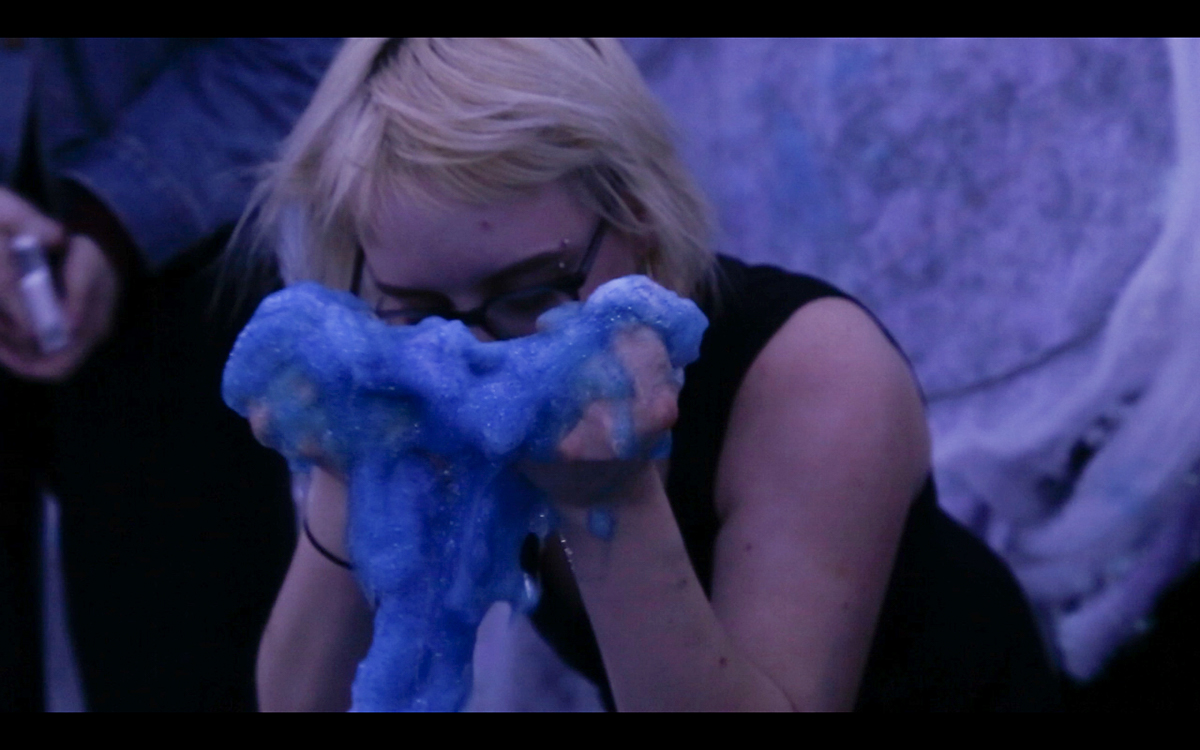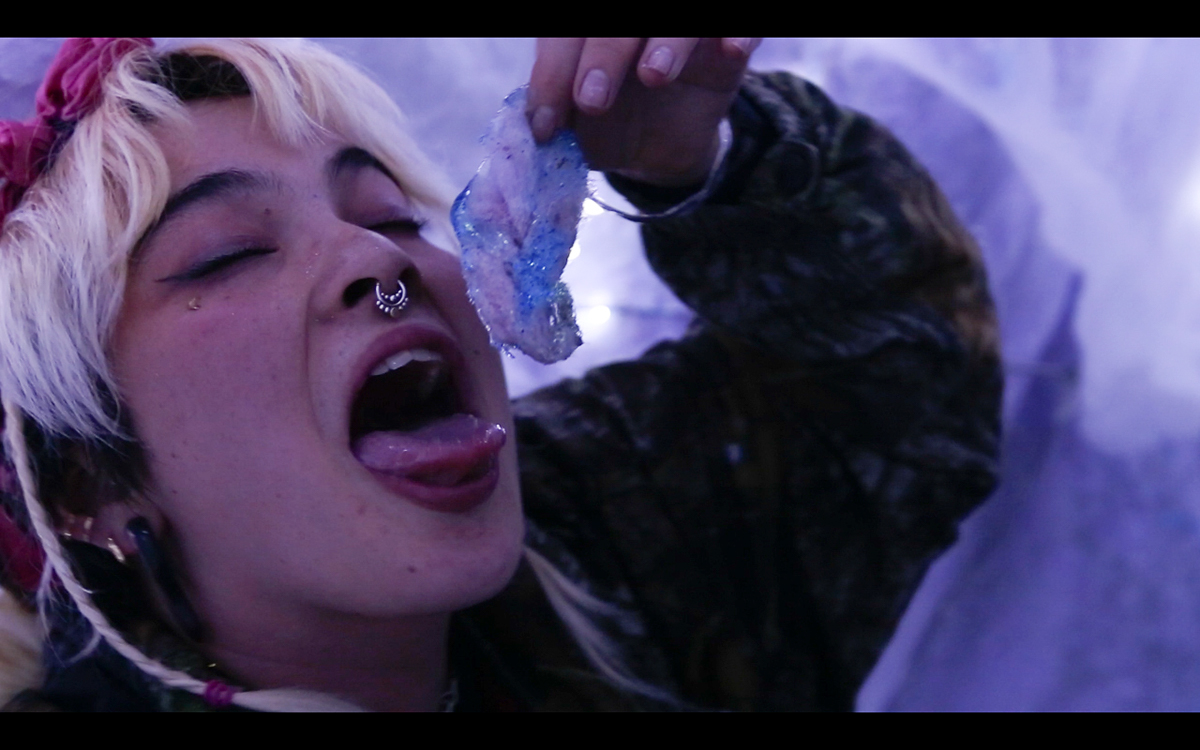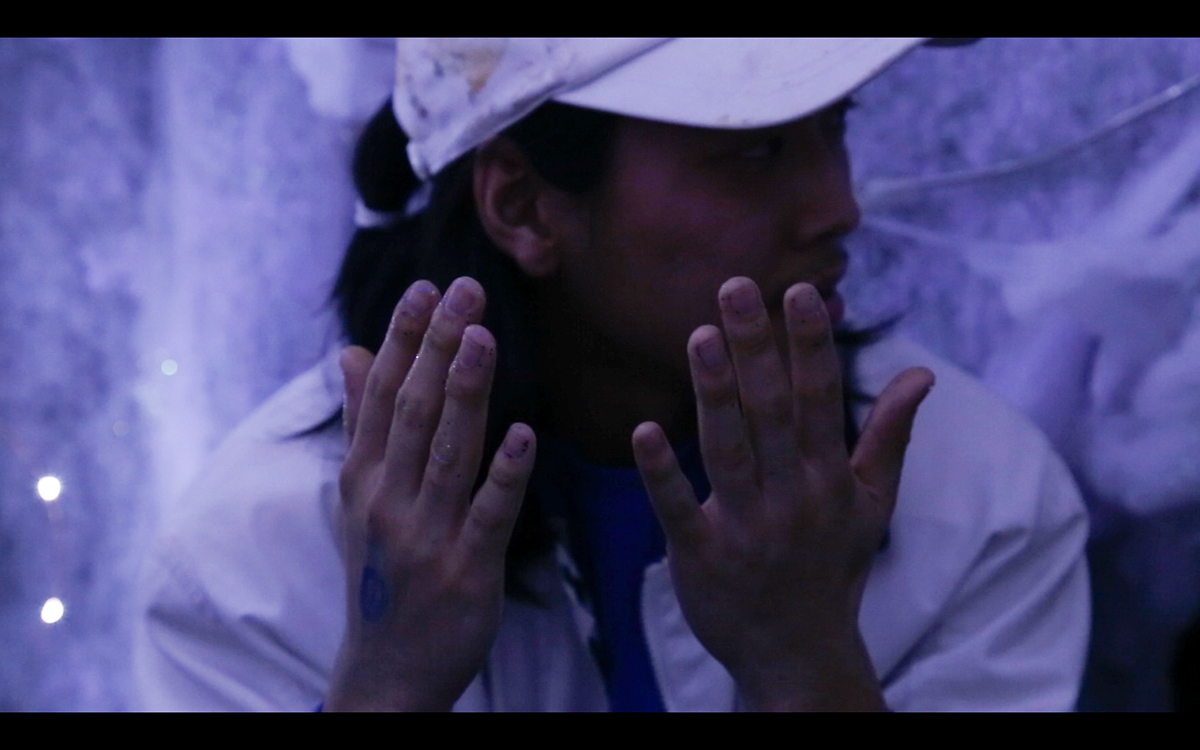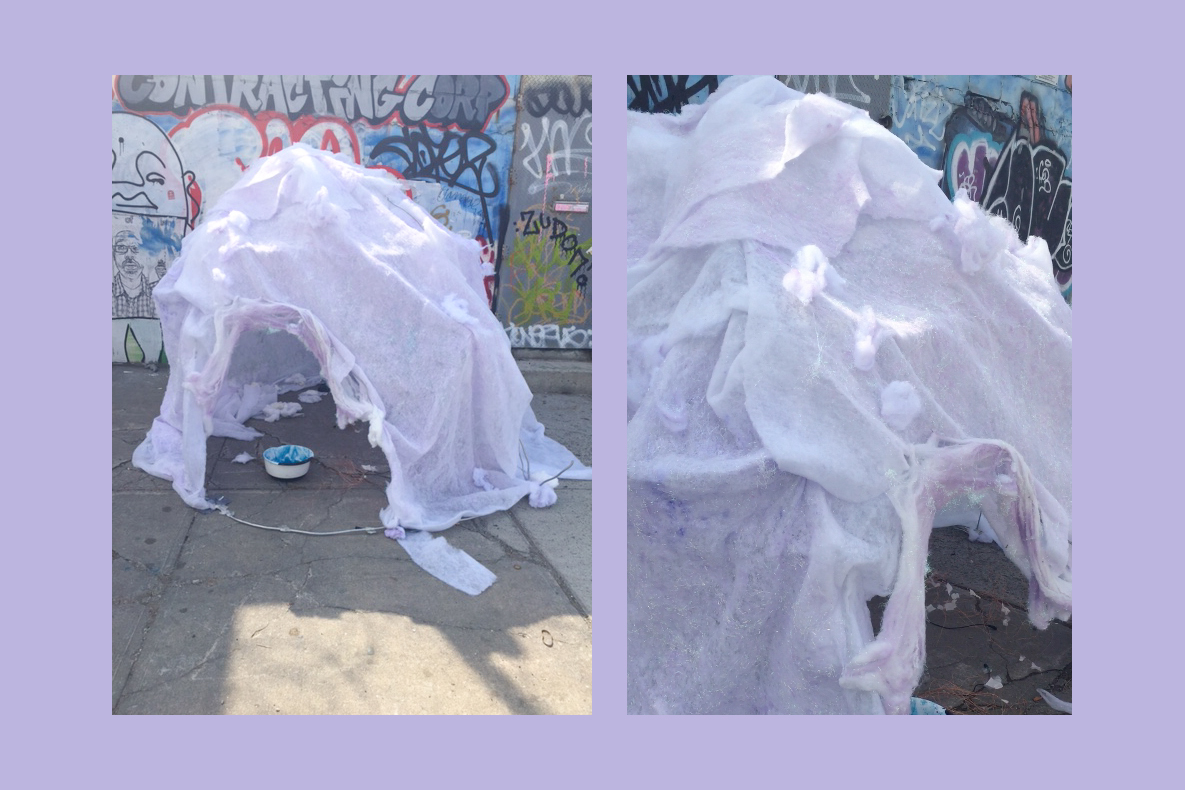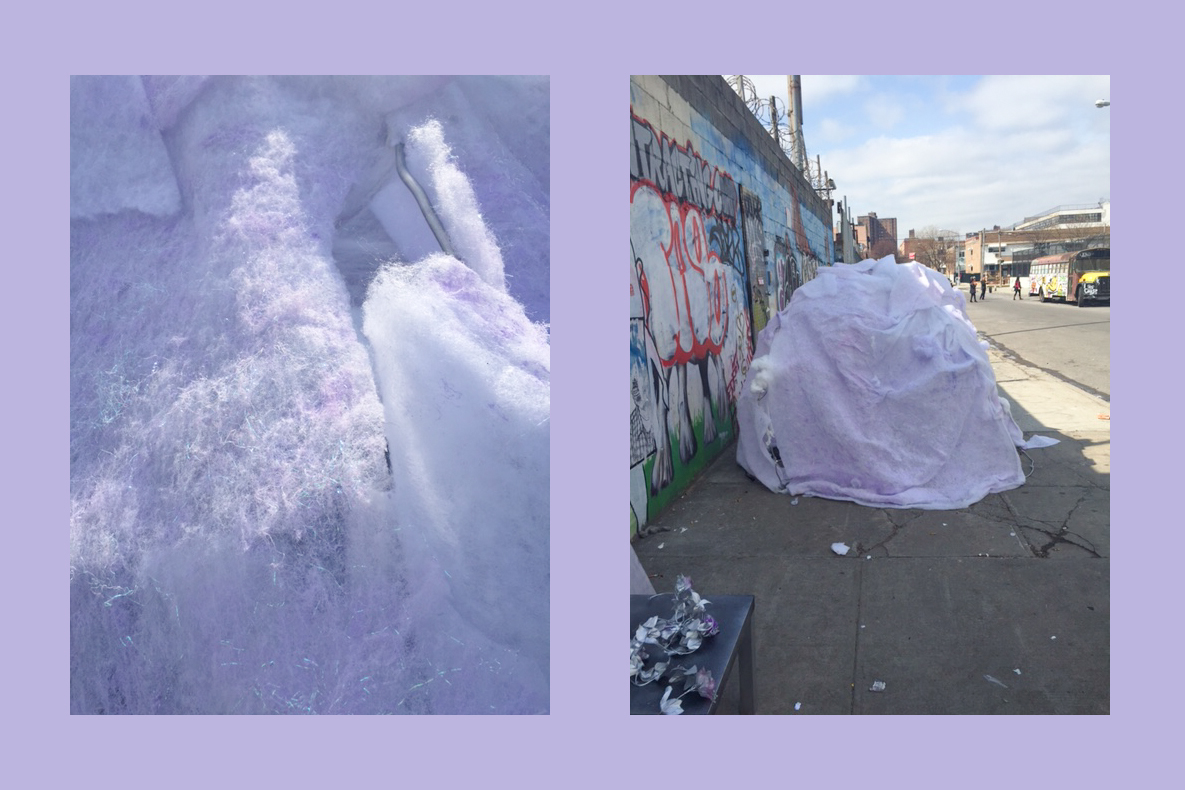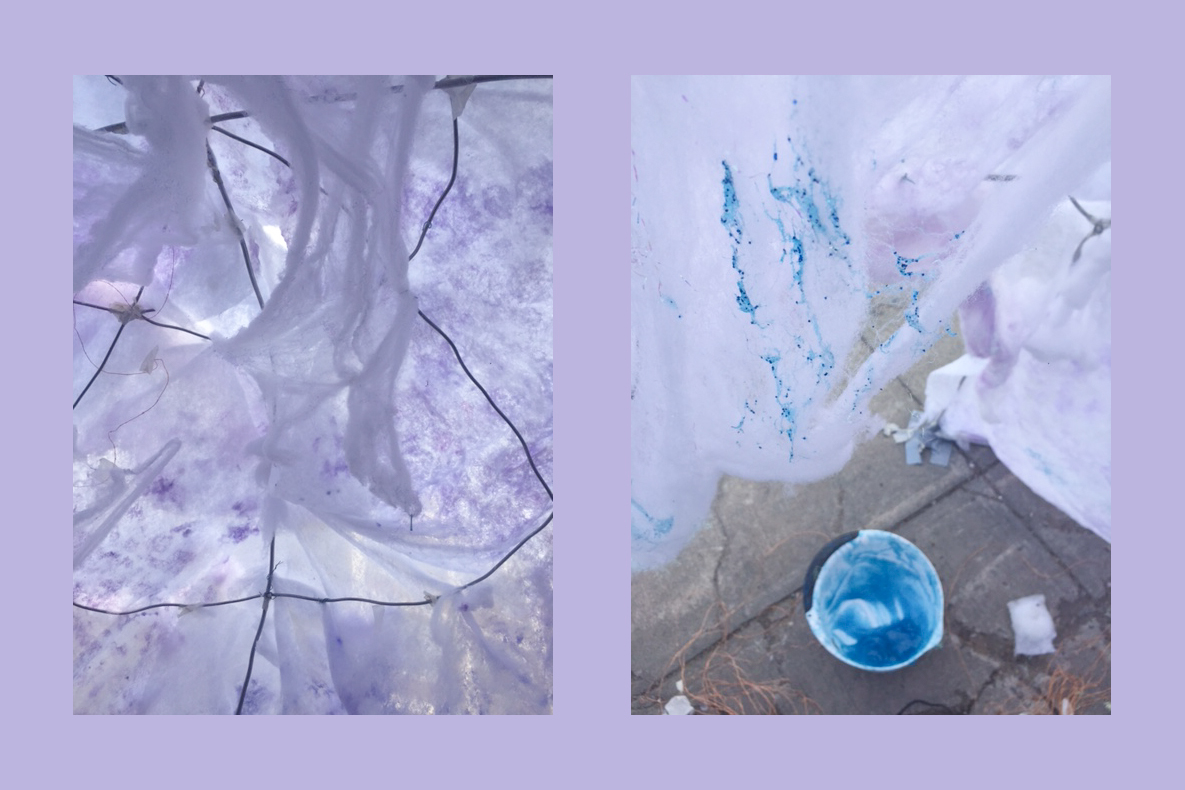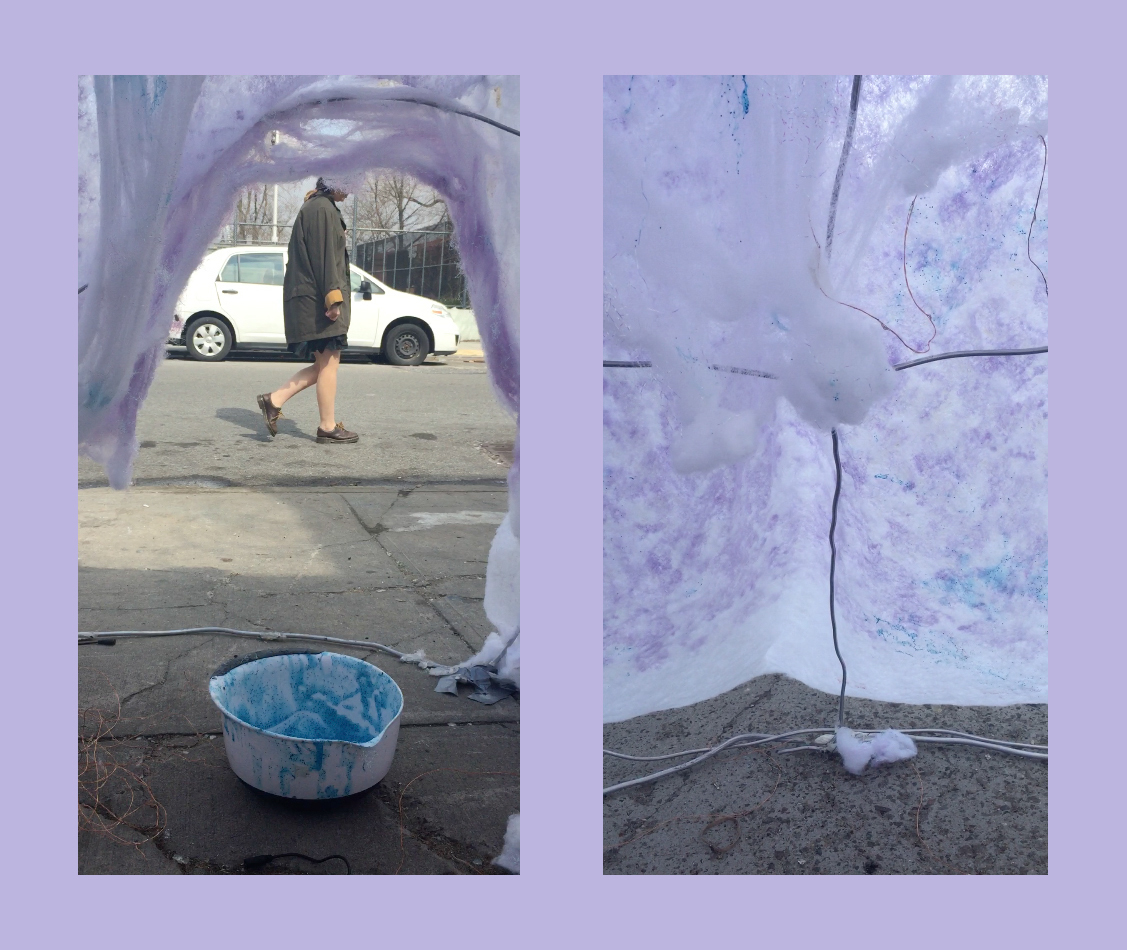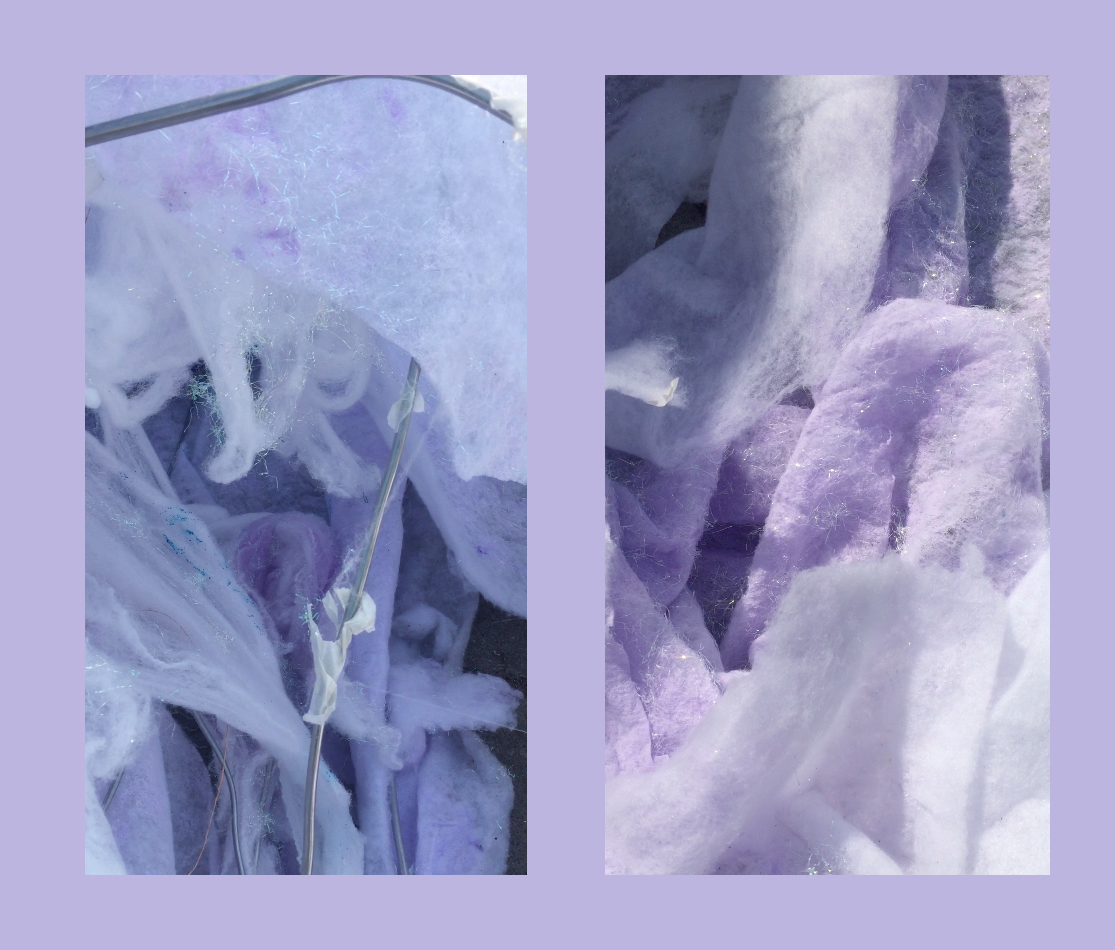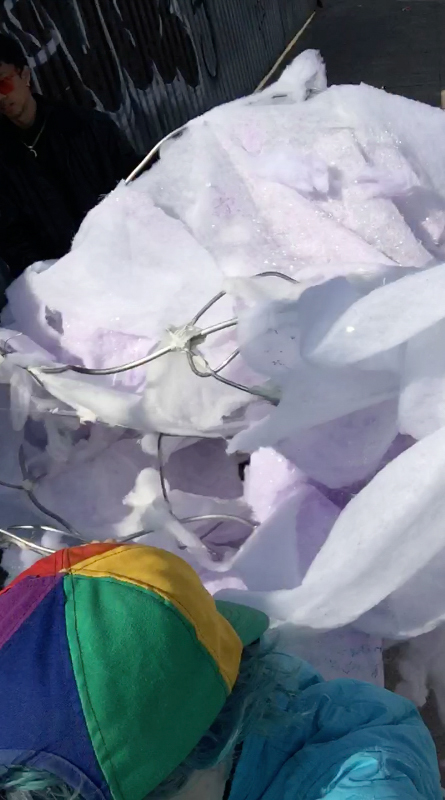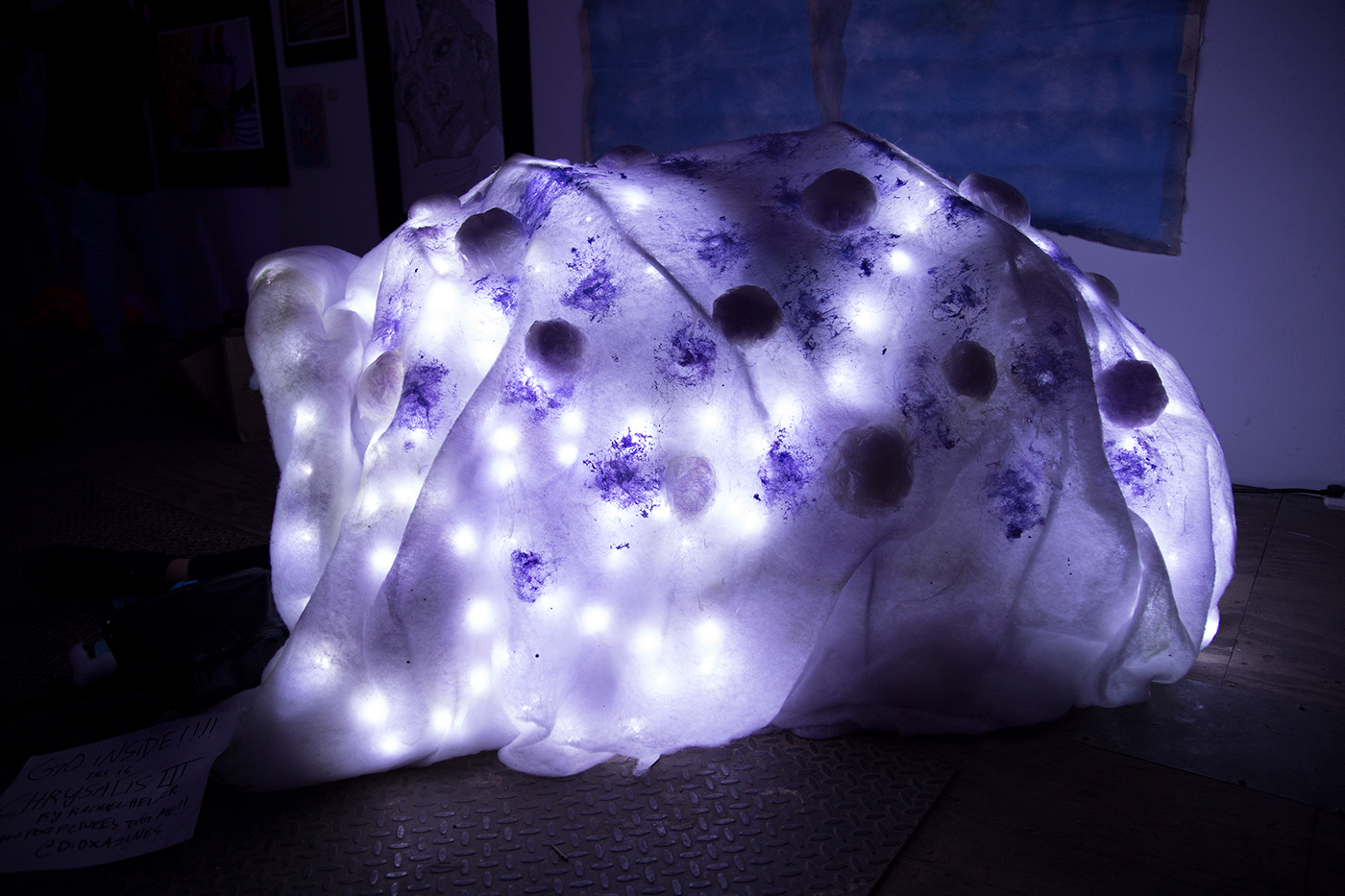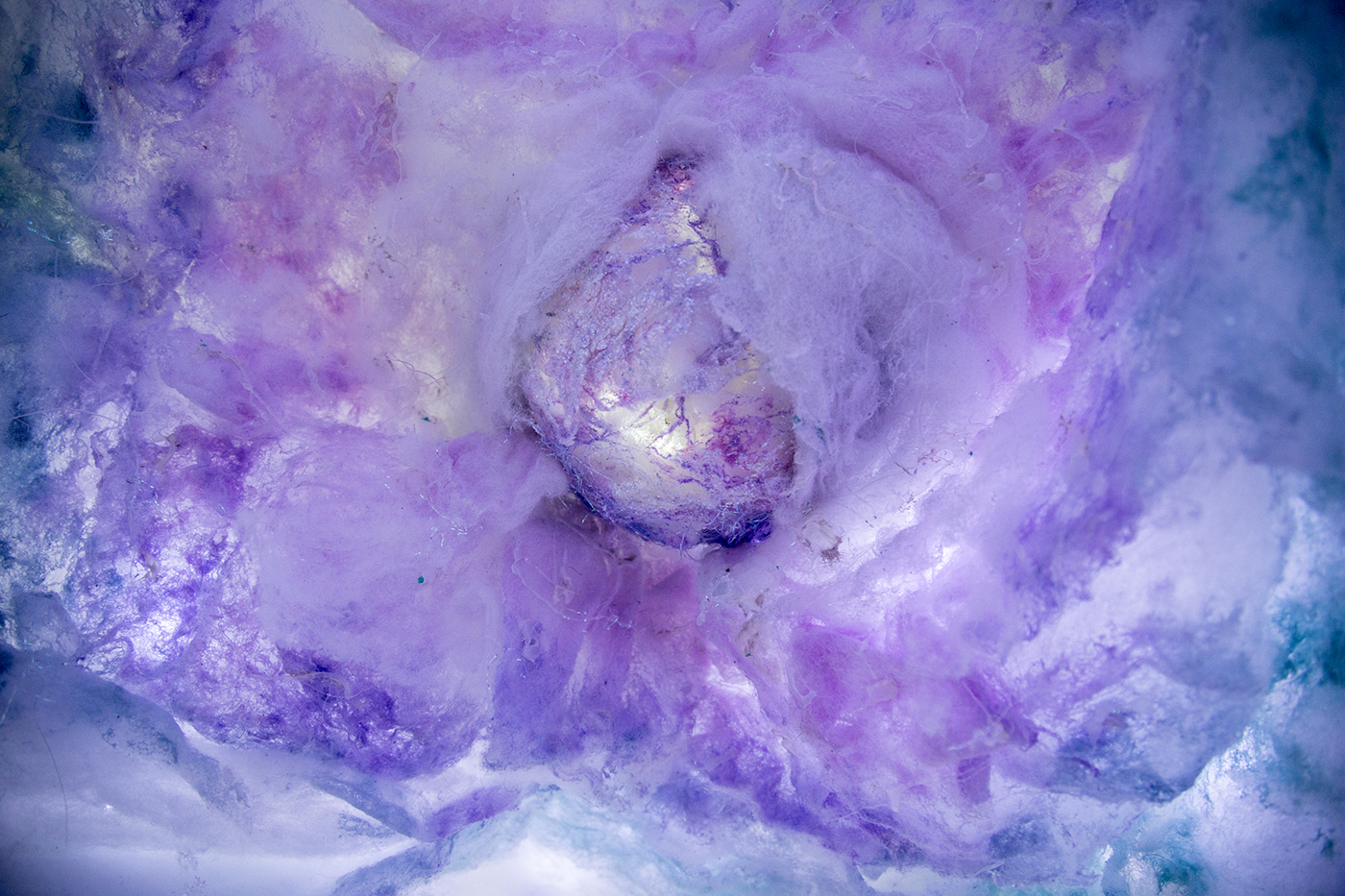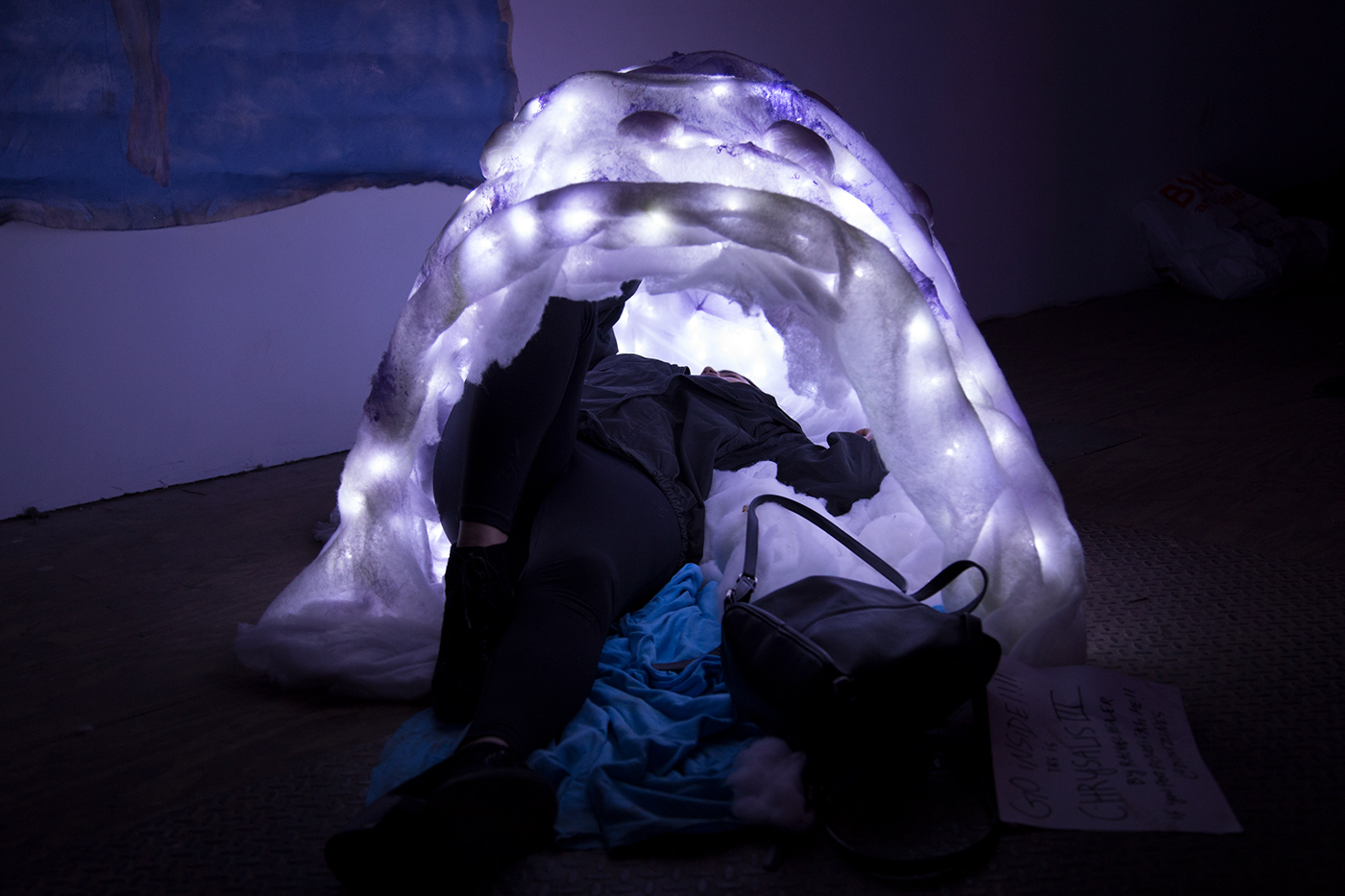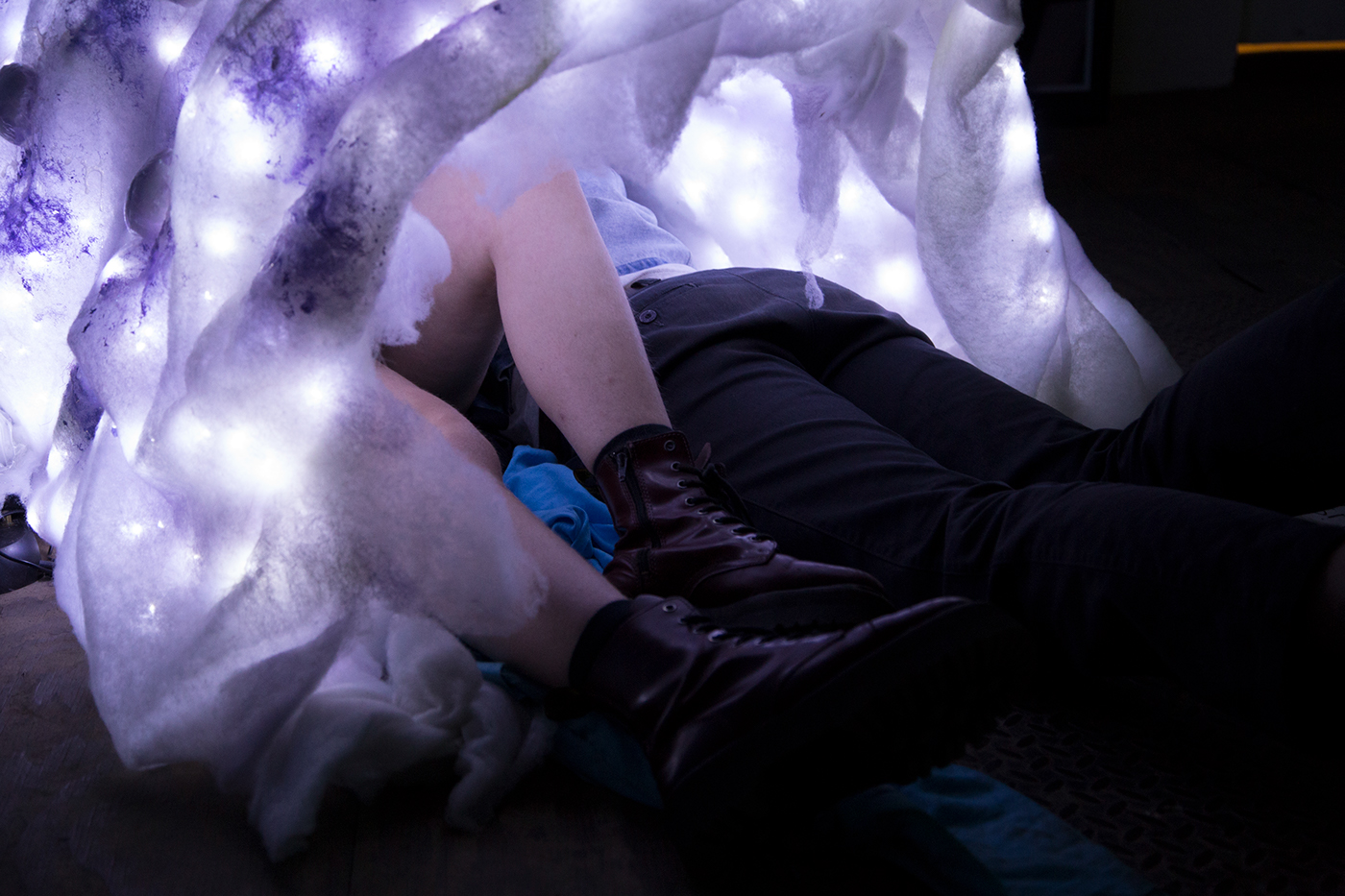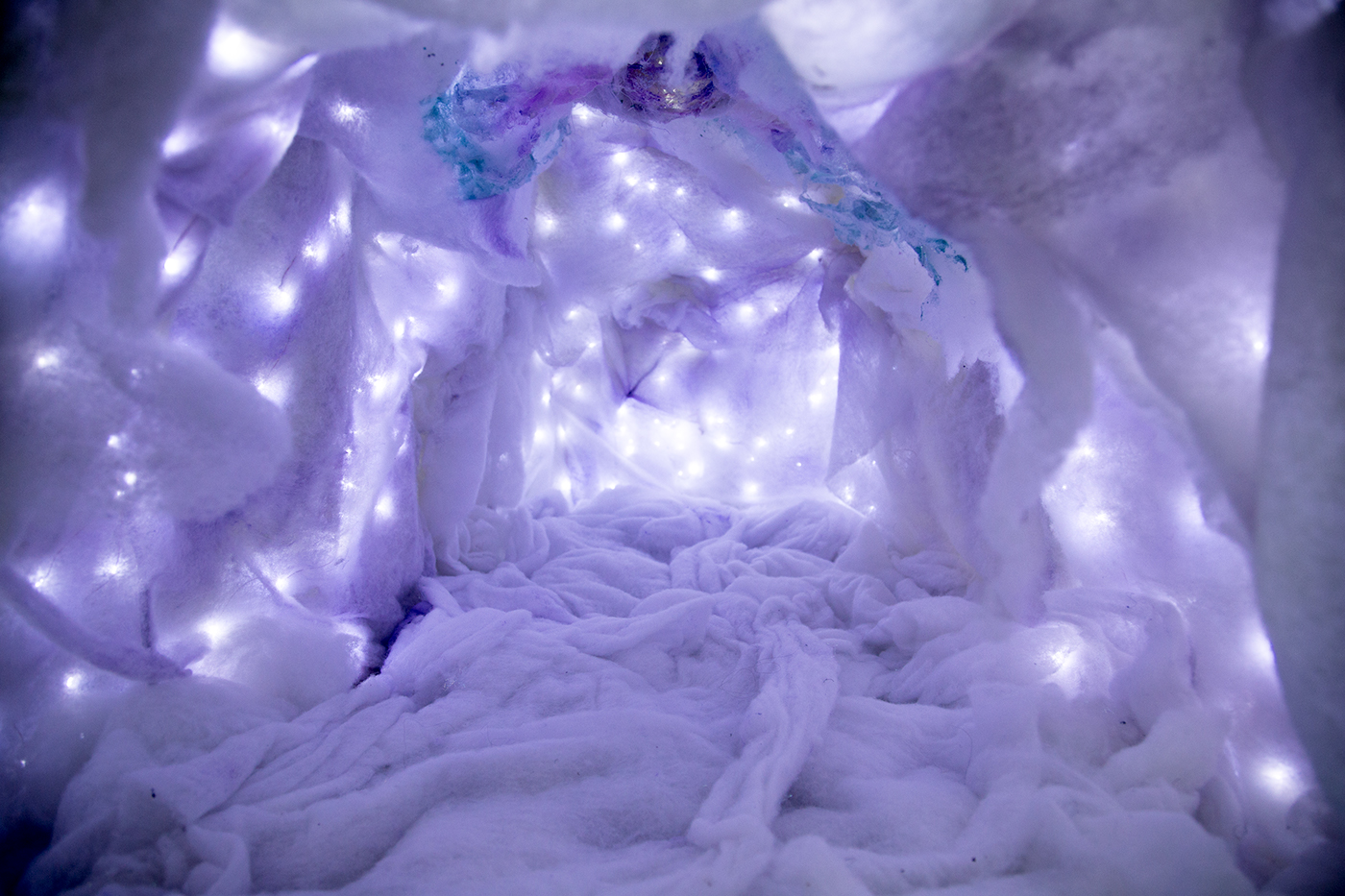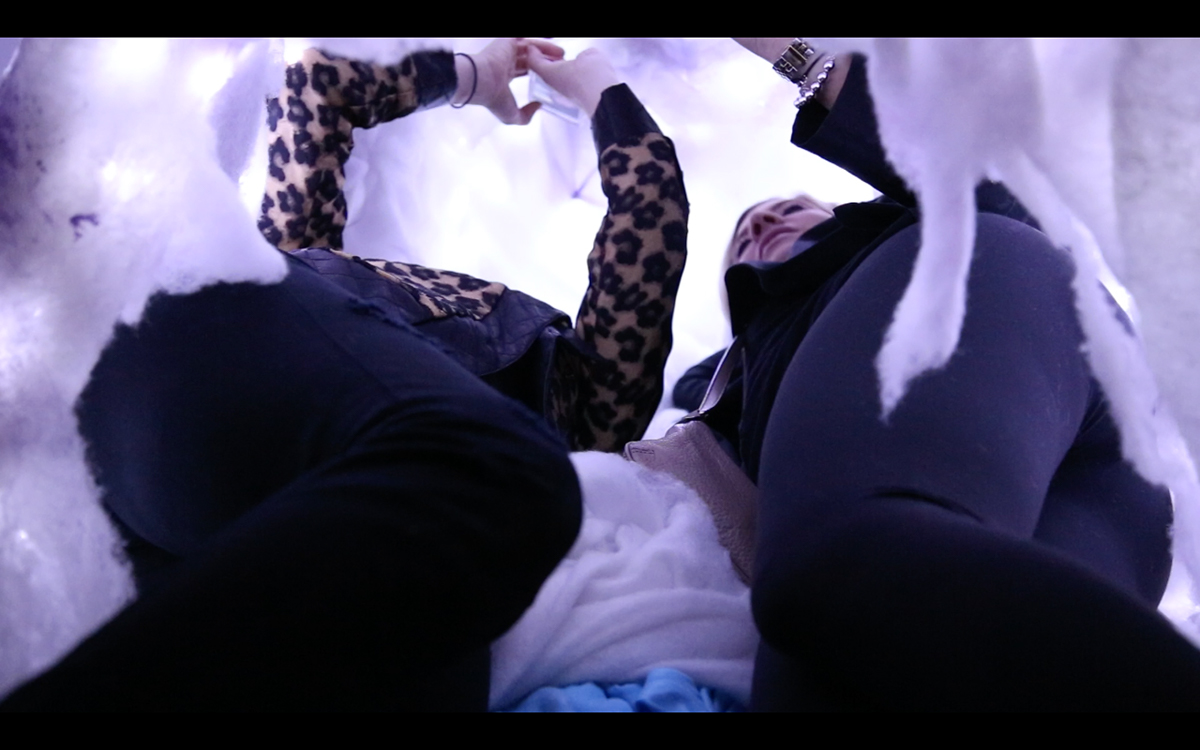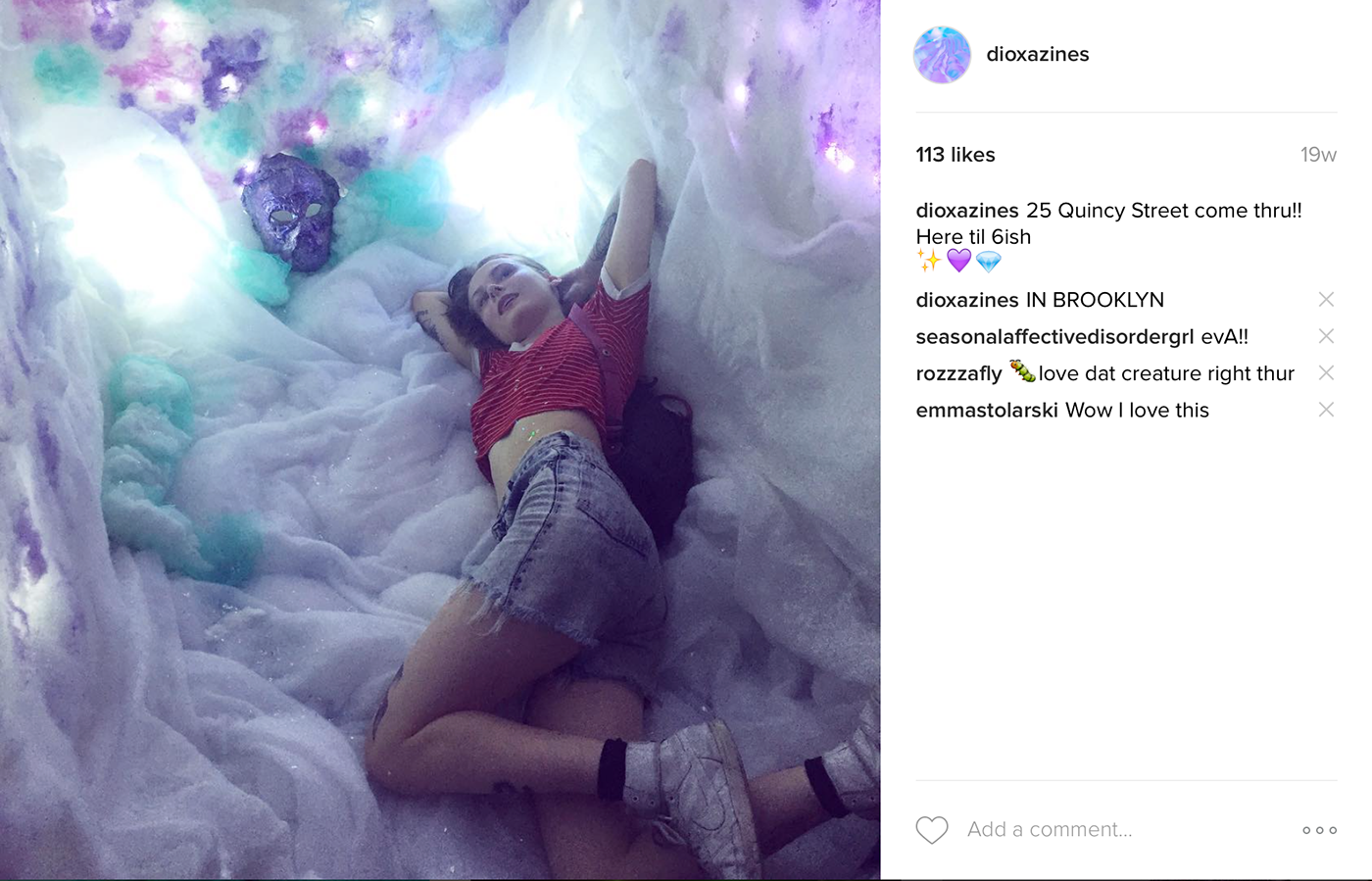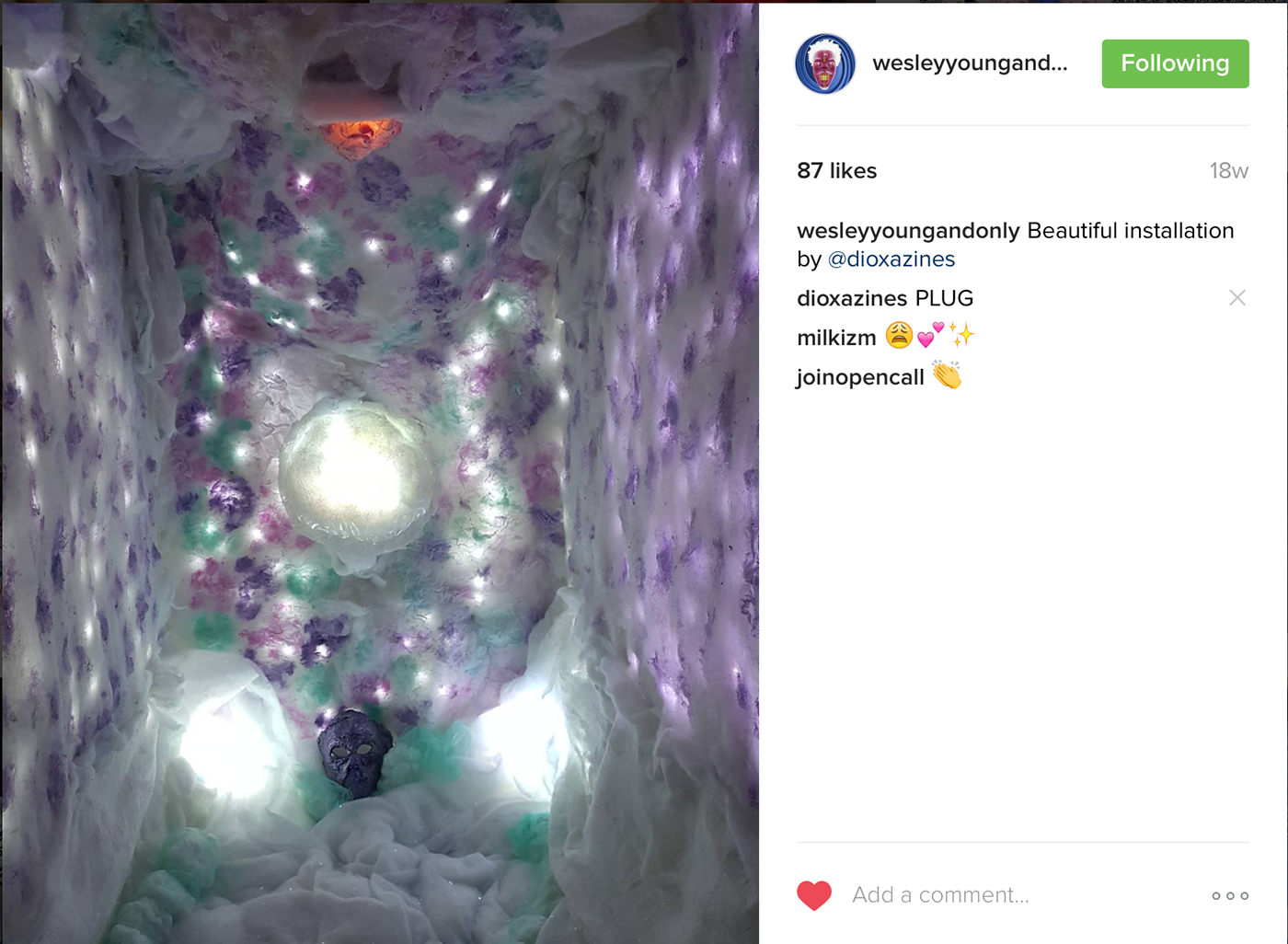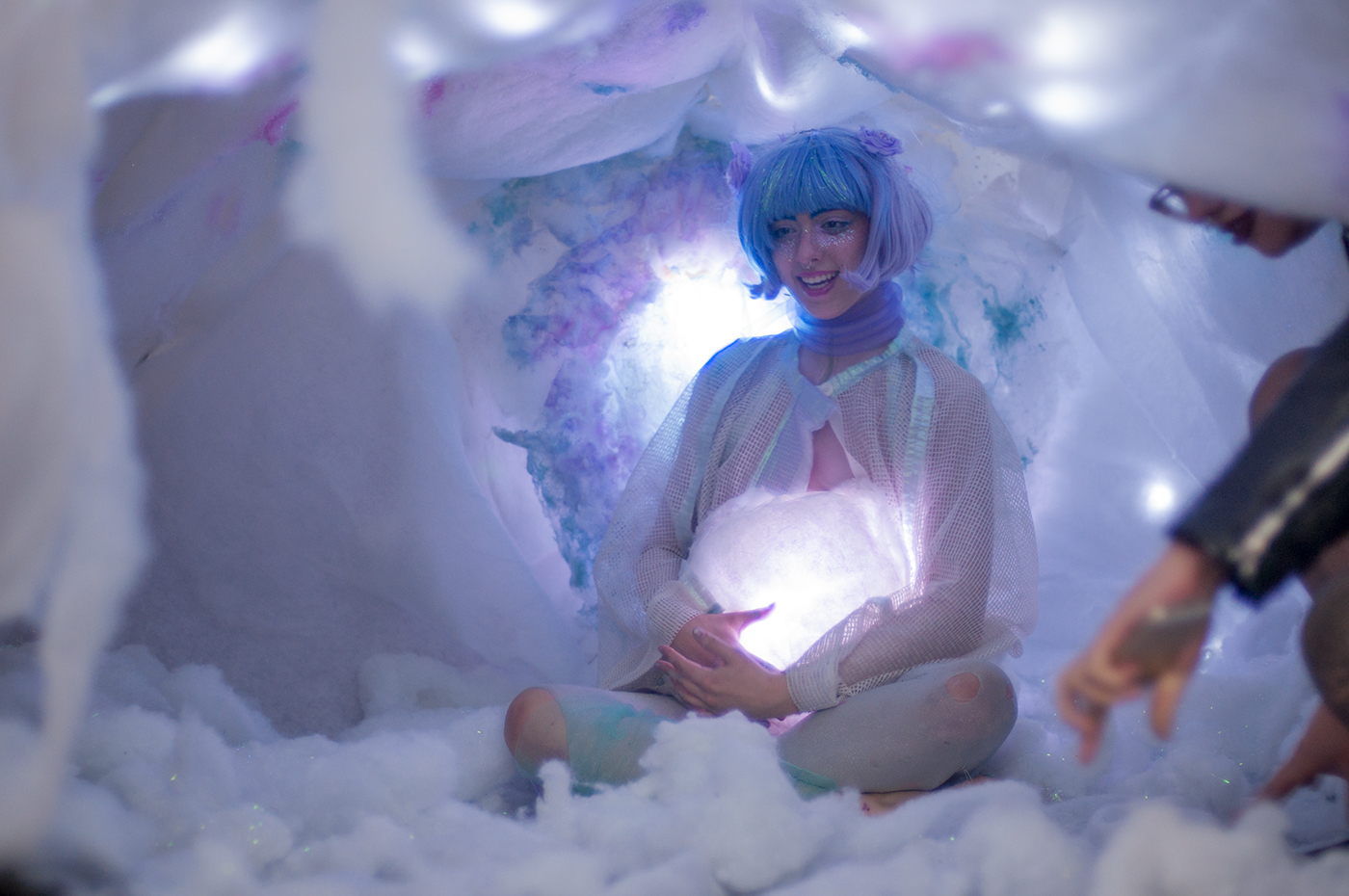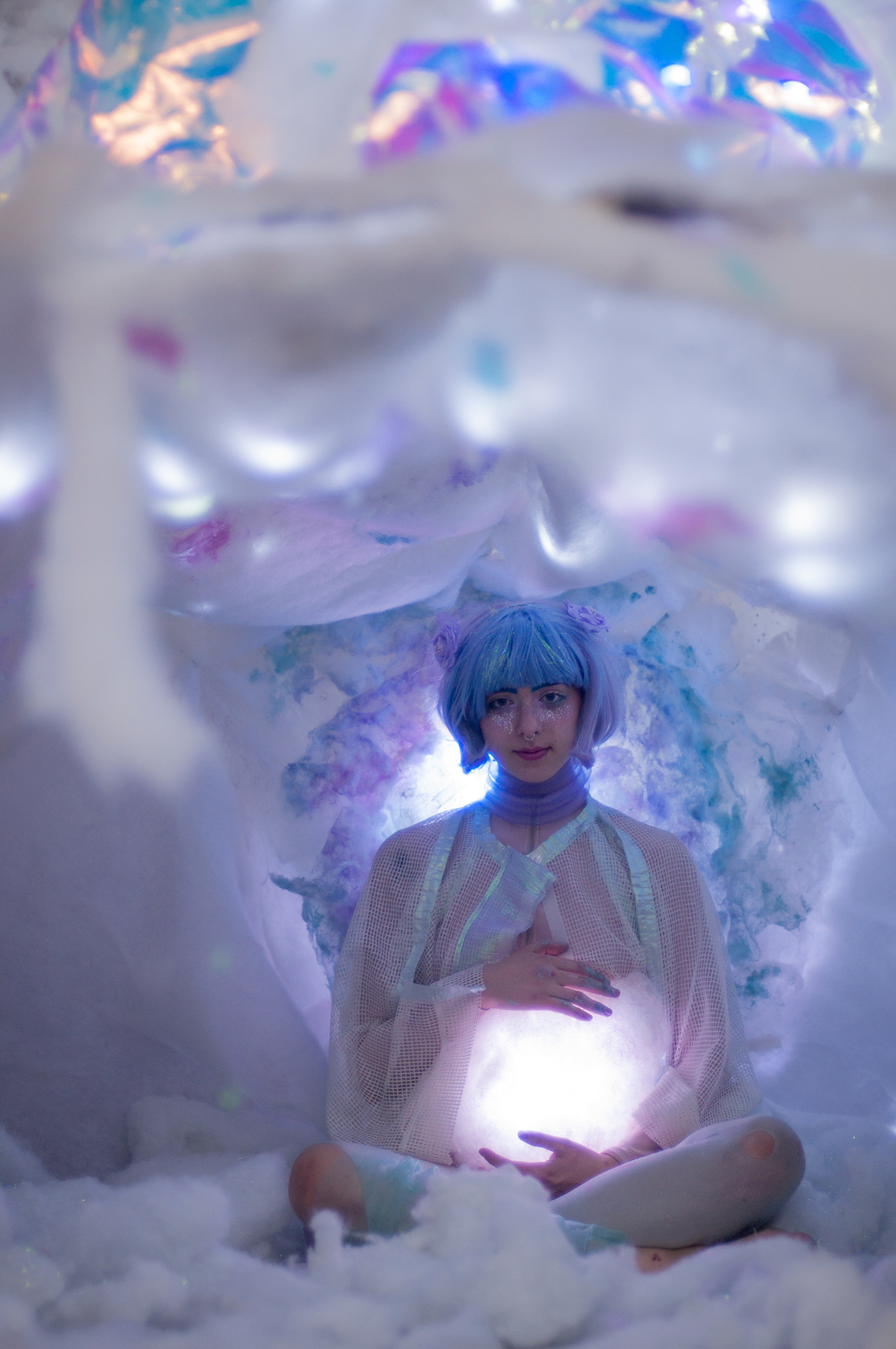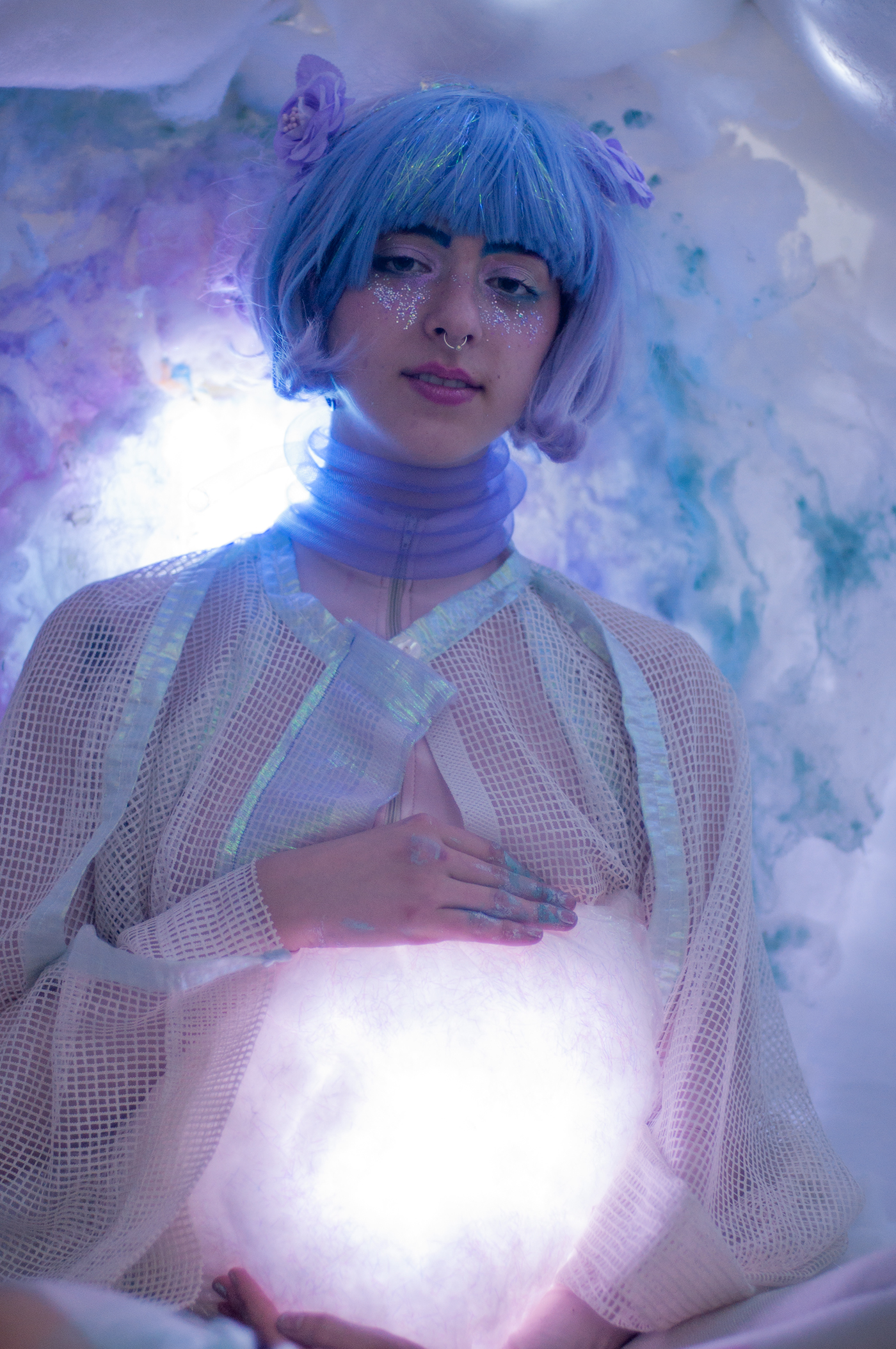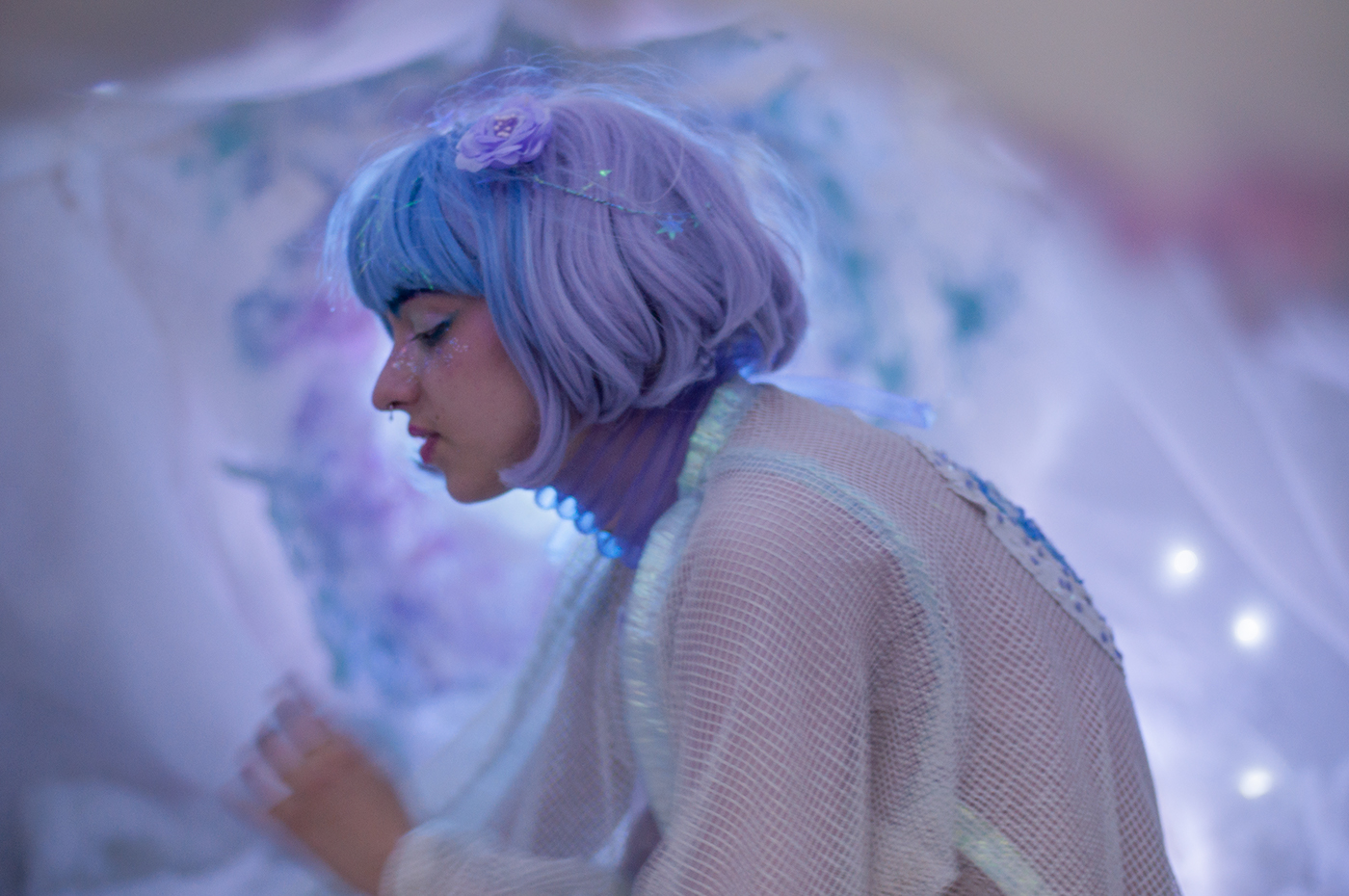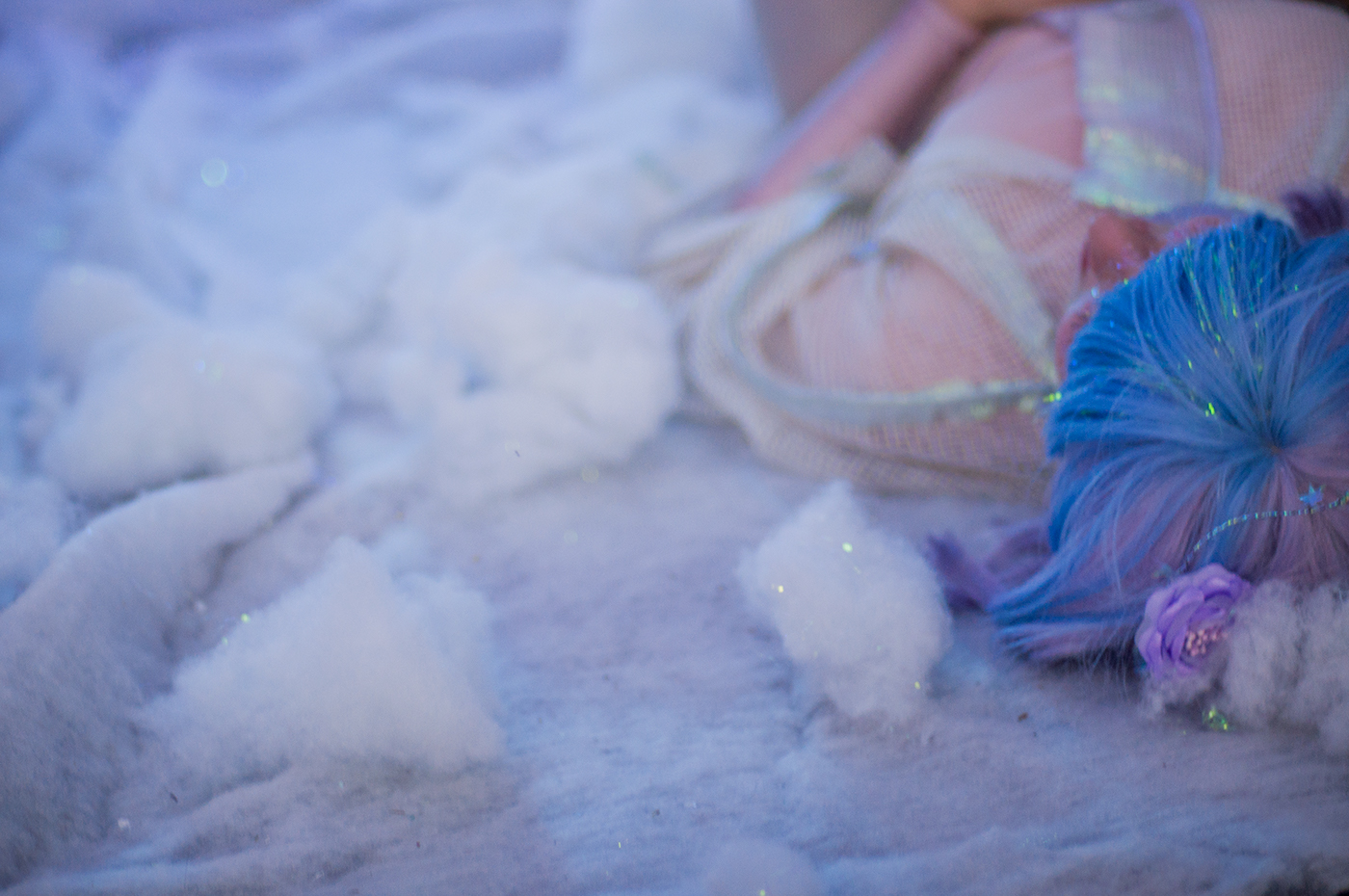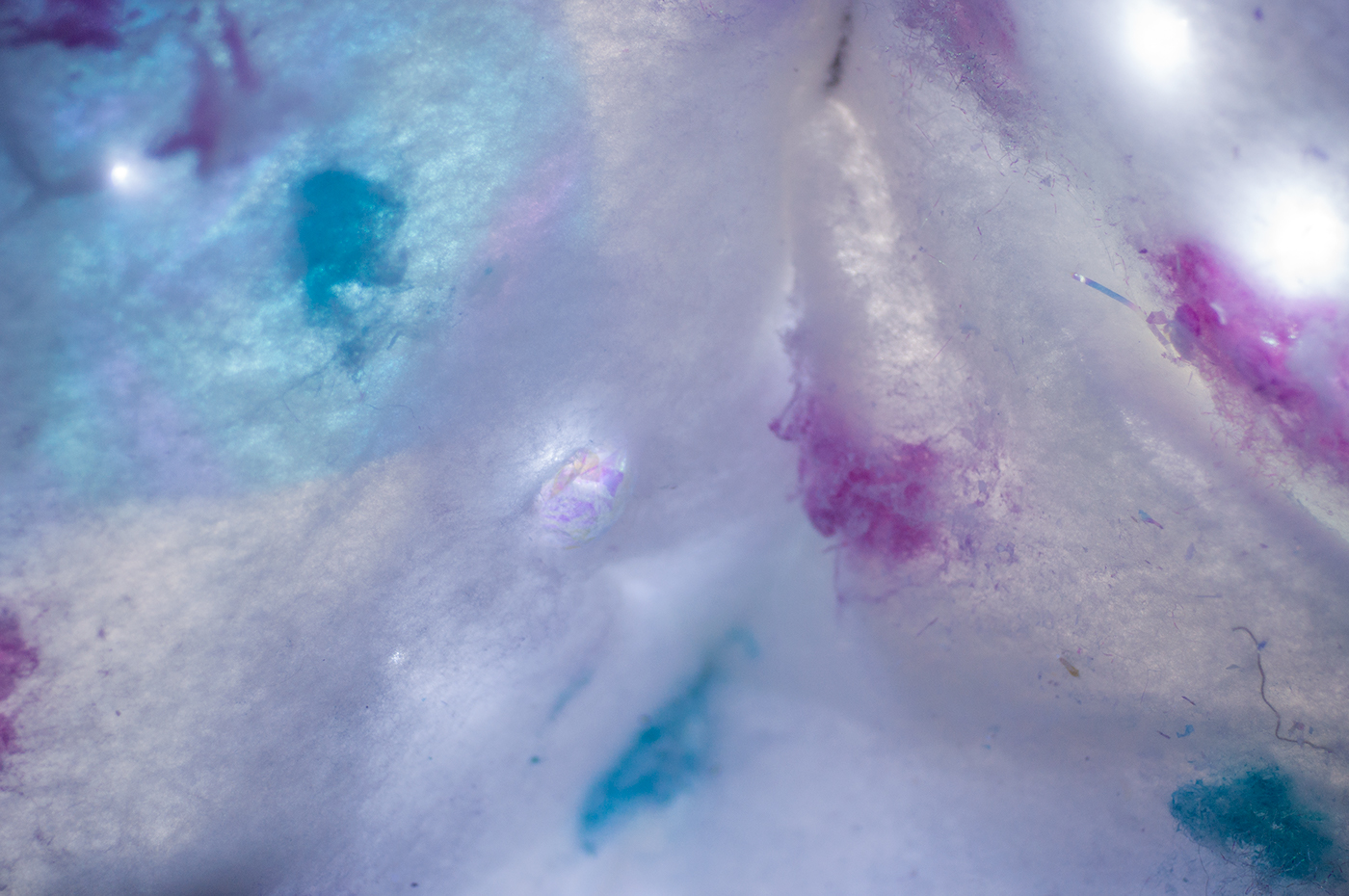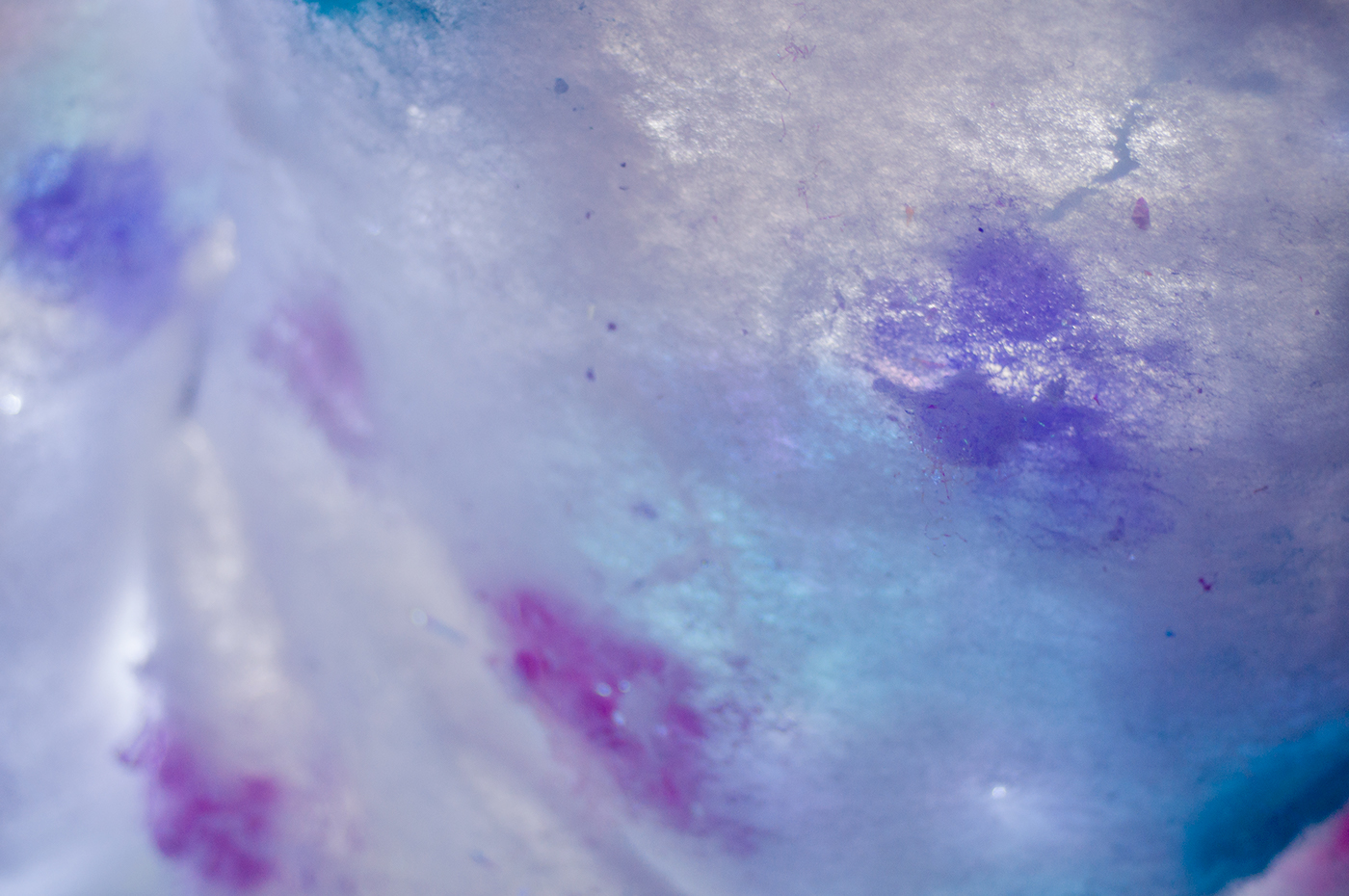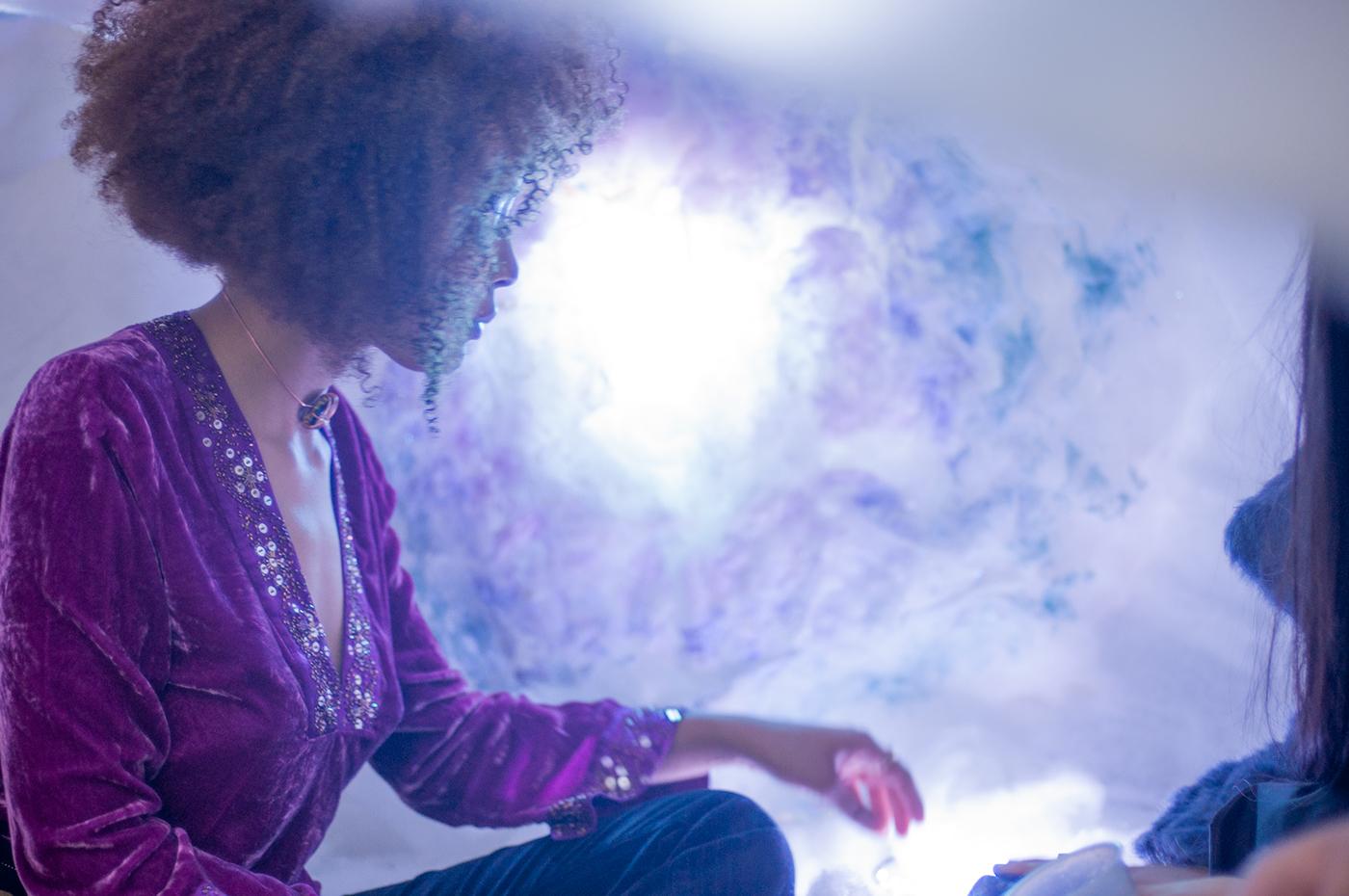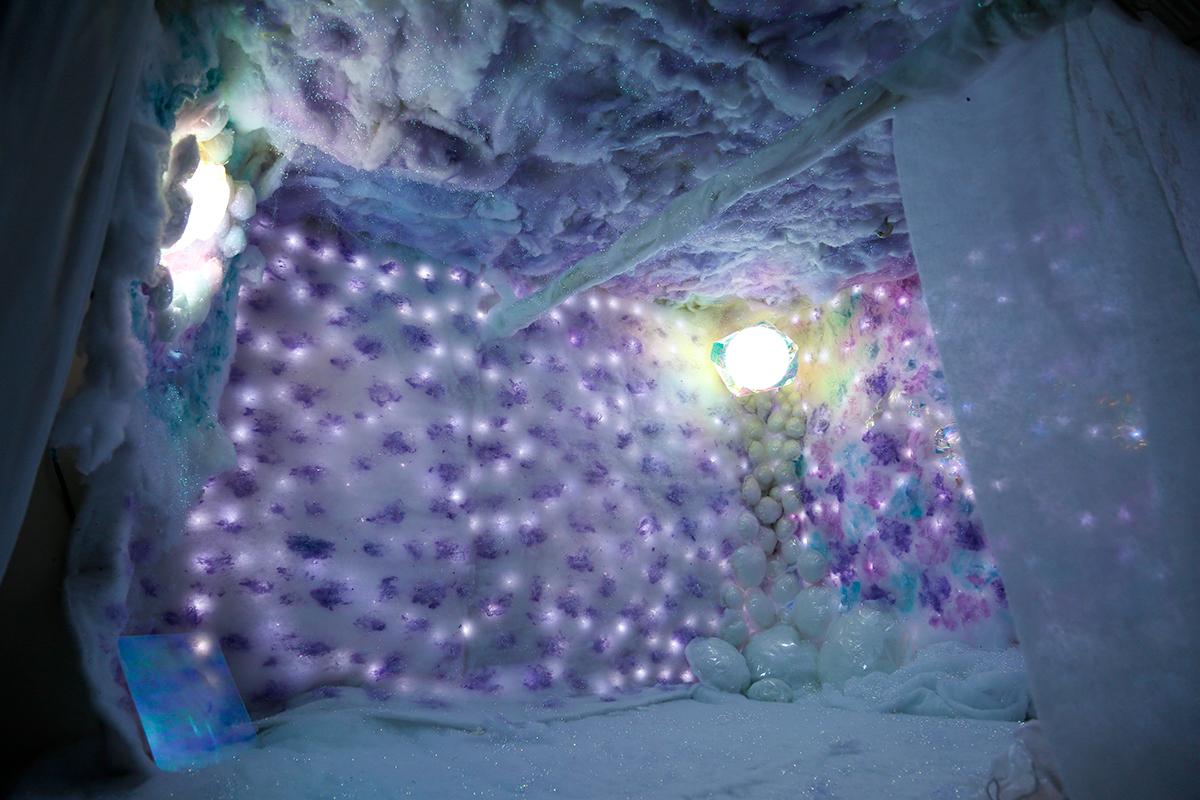
Chrysalis began in November, 2015 when a close friend of mine from The New School invited me to create an environment in his loft apartment as part of a one-night-only art show + concert with other art students in Brooklyn. At his place in McKibbin lofts, I used a 6 by 8 foot space as an outlet to explore textures and soft-sculptural objects that I had been experimenting with since coming to RISD that fall. The concept surrounding the space comes from a specific point in the process of insect metamorphosis. When a caterpillar or worm forms itself into a chrysalis in preparation for the next stage of life, the insect does not simply morph into its new form by sprouting wings and growing extra legs; rather, its body completely deteriorates into a fluid, a sort of gooey mix of biological material. From there, cells that contain crucial information, similar to stem cells, aid in the reformation of the butterfly or moth or beetle. I am interested in this liminal state which dictates that complete deconstruction of the physical self is necessary to move onto the next stage of development in life. The science behind what happens in a chrysalis is much more extravagant and dire than the elementary illustrations of butterfly metamorphoses we are introduced to as children, and in my opinion, much more accurate to the steps of development of the human self.
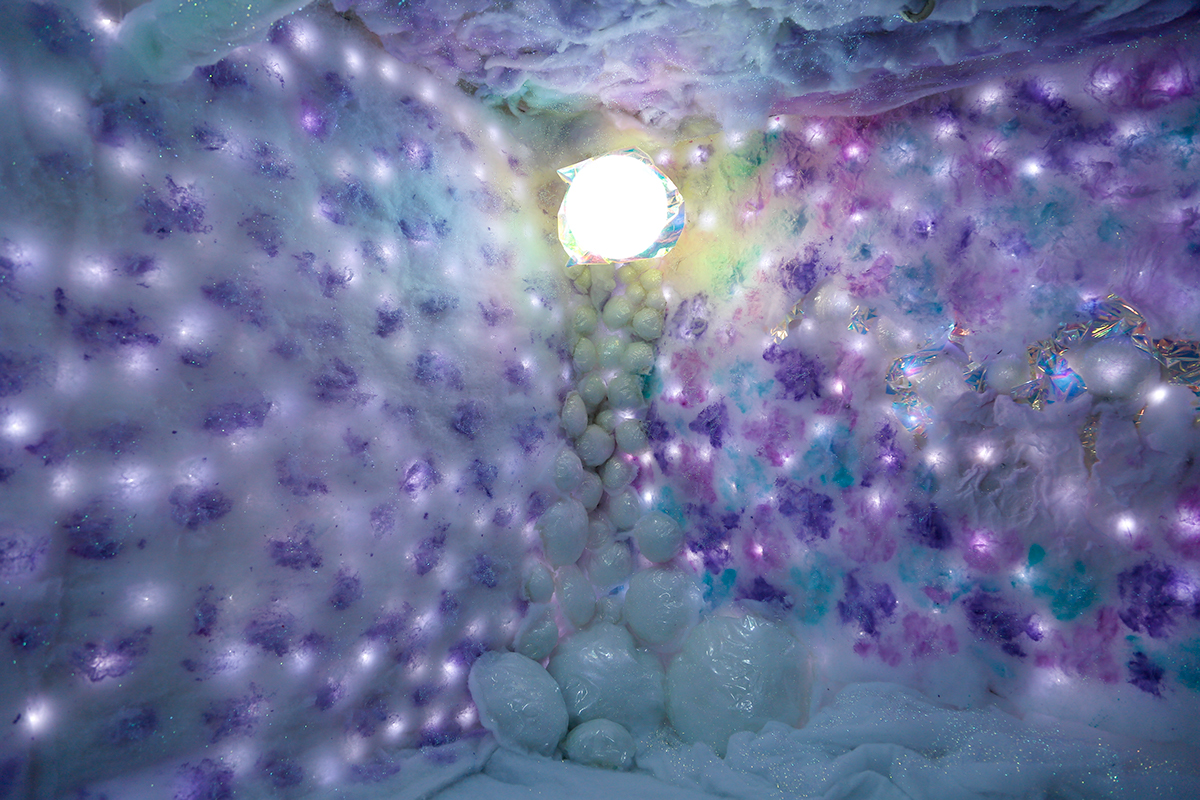
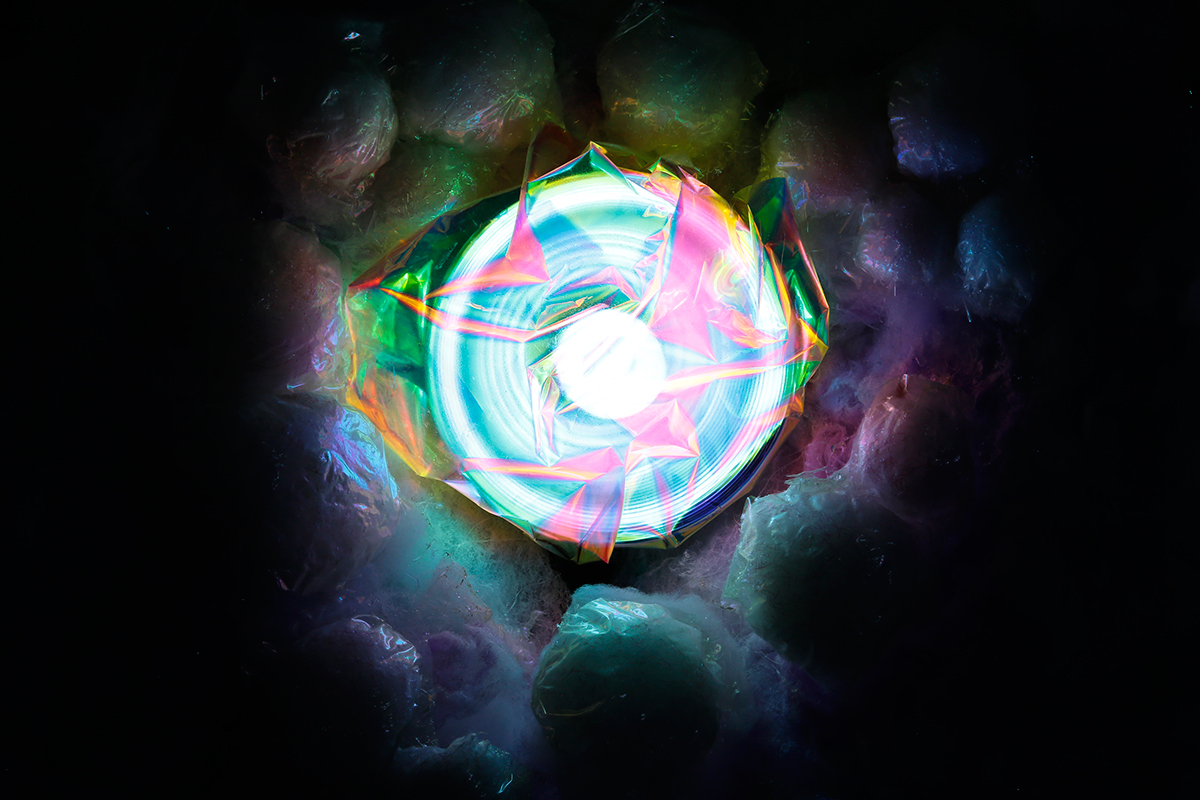
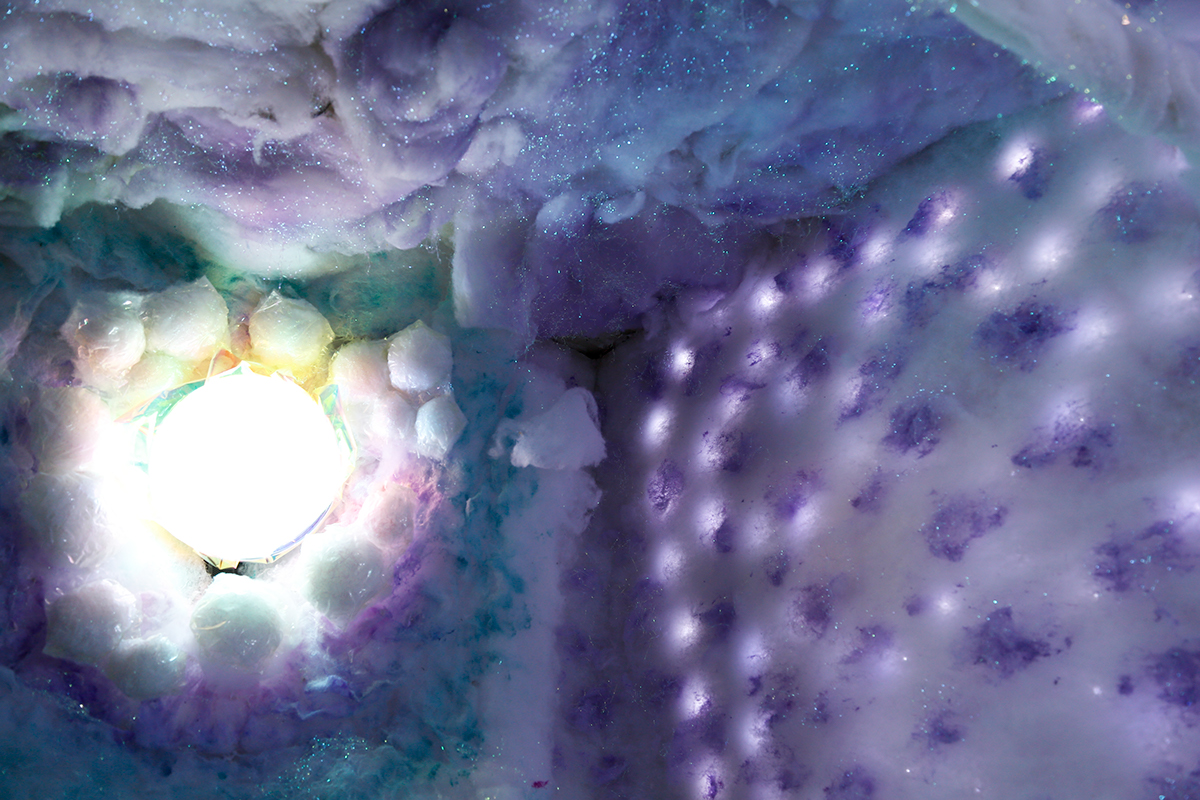
The material language of Chrysalis developed from a small series of experiments during my summer foundations study at RISD in which I began painting with acrylics on quilt batting in order to create unusual textures in my Spatial Dynamics class. The texture created when applying paint or glue or other liquids onto synthetic quilt batting is rather uncomfortable; it mimics matted animal fur or some sort of unidentifiable plant material muck. I was inspired to create an environment out of this curious and unsettling series of textures and incorporated other polymer-based materials like tinsel, vinyl, and holographic sheets of plastic. Many decorative materials synthesized by humans are meant to mimic specific examples of natural beauty, like the iridescence of craft foil that echoes the shell of a jewel beetle. I created egg-sac like objects to expand on the visual vocabulary of an insectile world. Chrysalis is effectively an entirely human-synthesized environment, and I am still working to elaborate on how this materiality affects the implications of an emotionally transformative environment.
